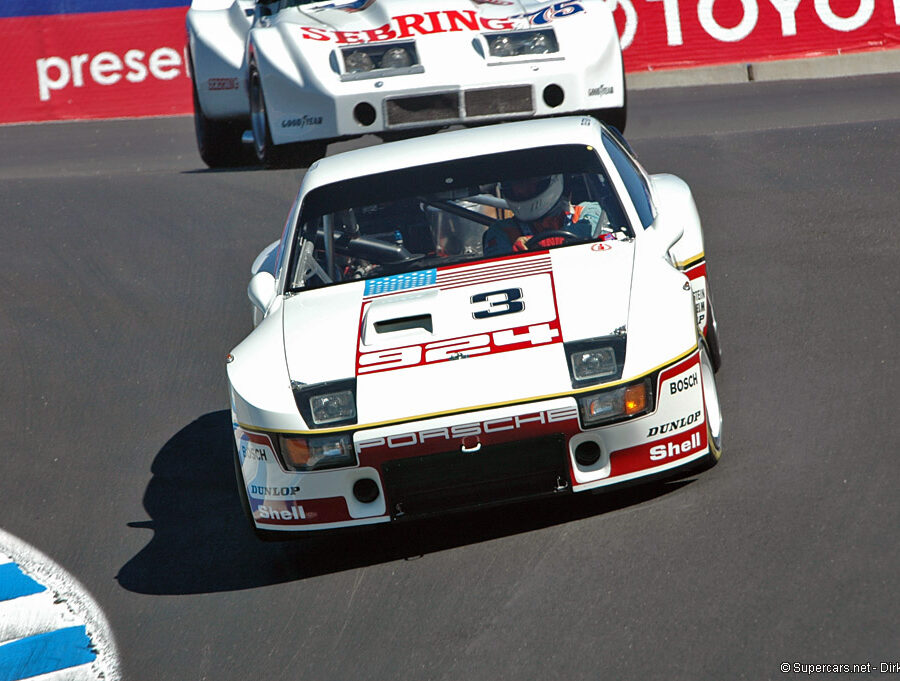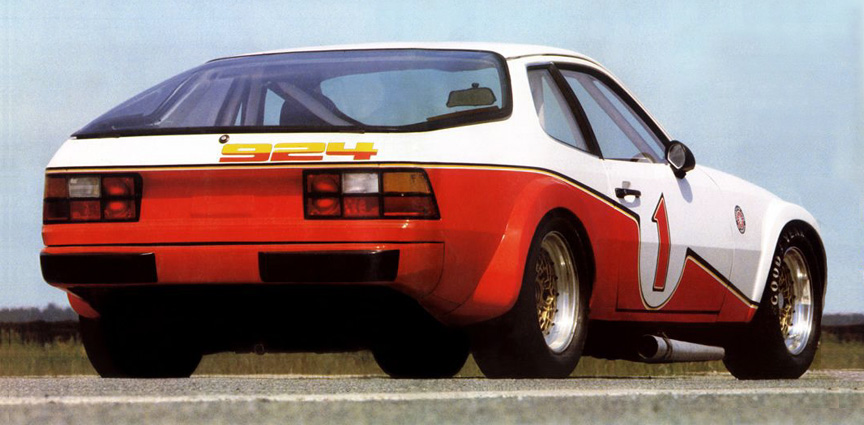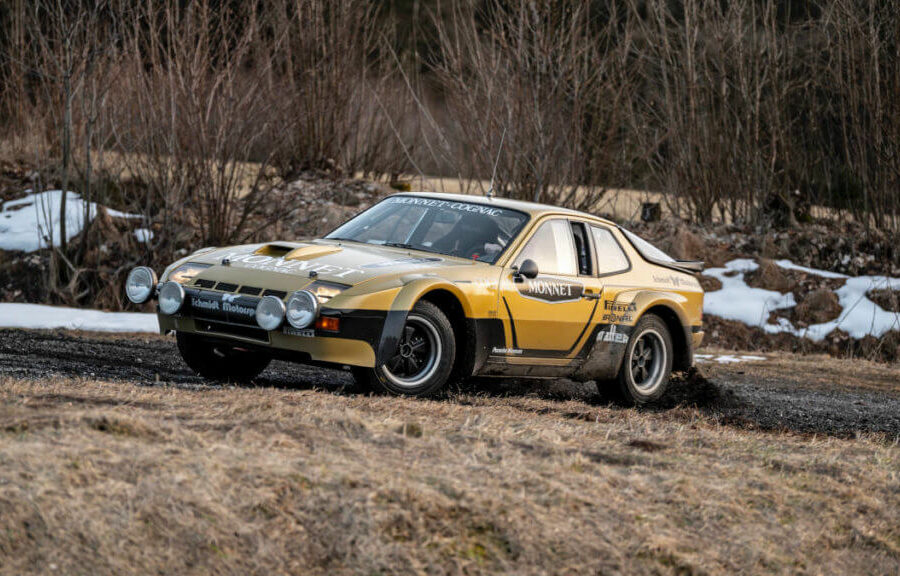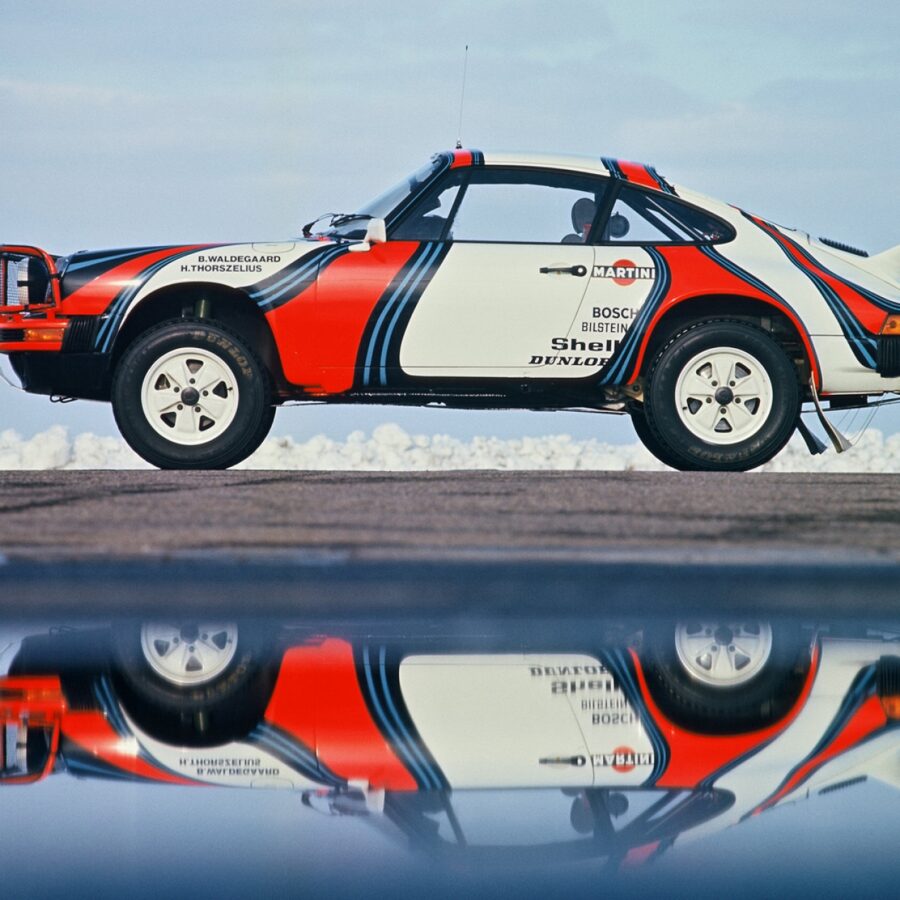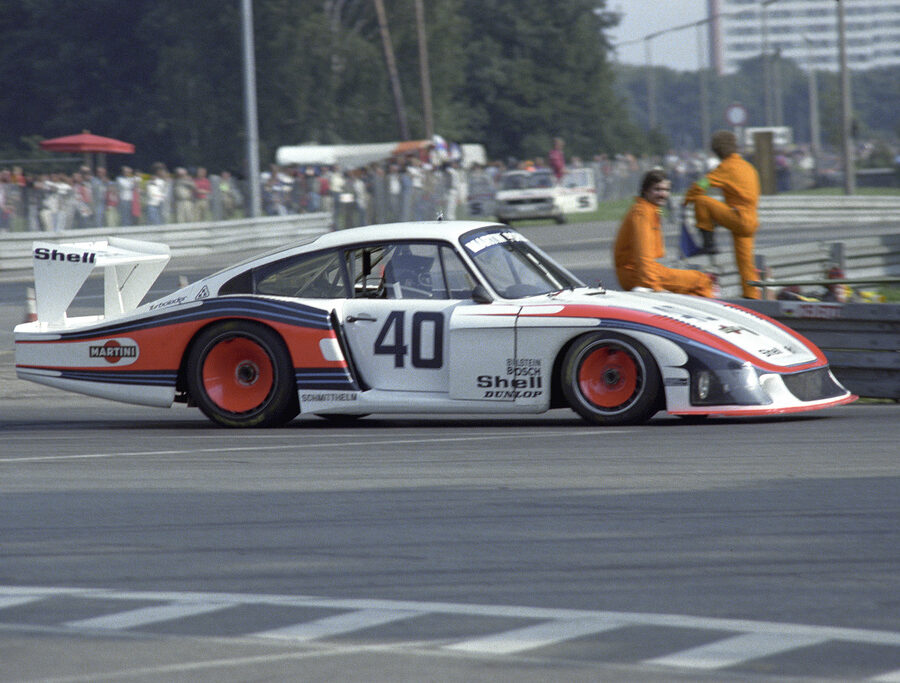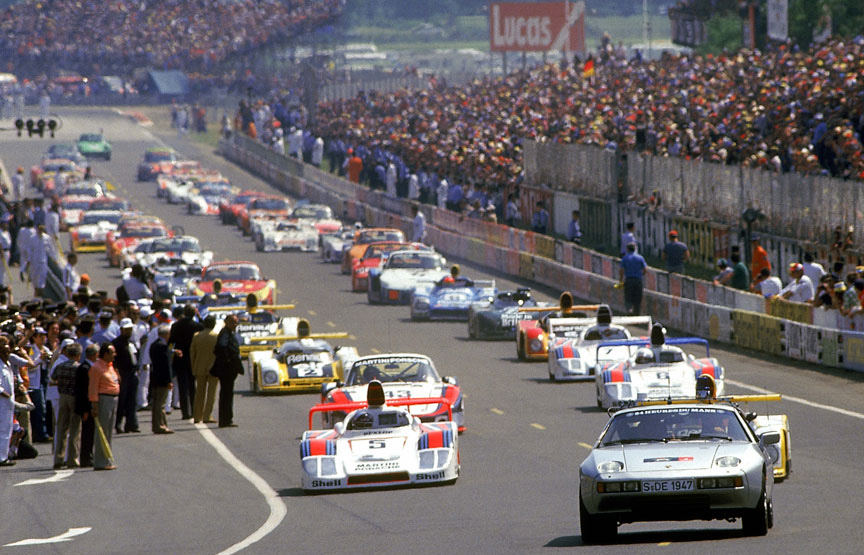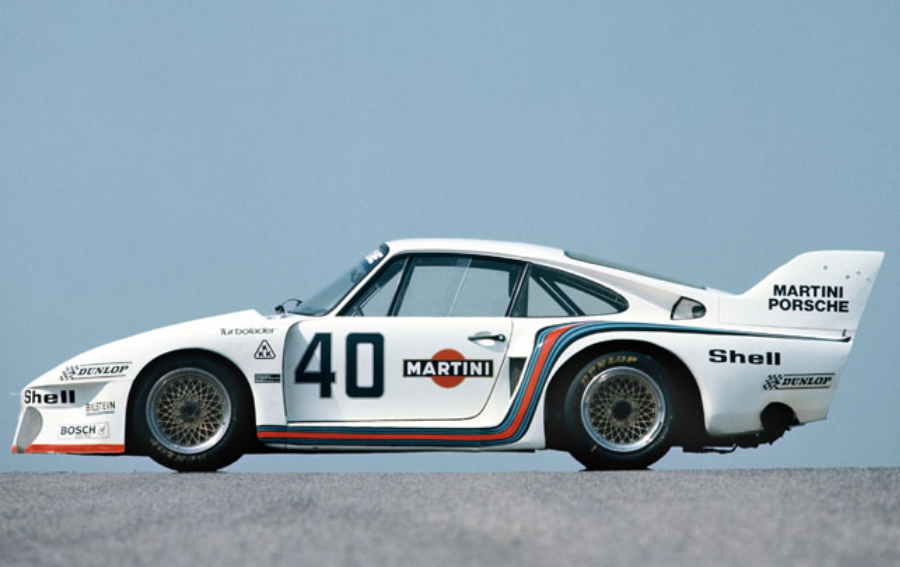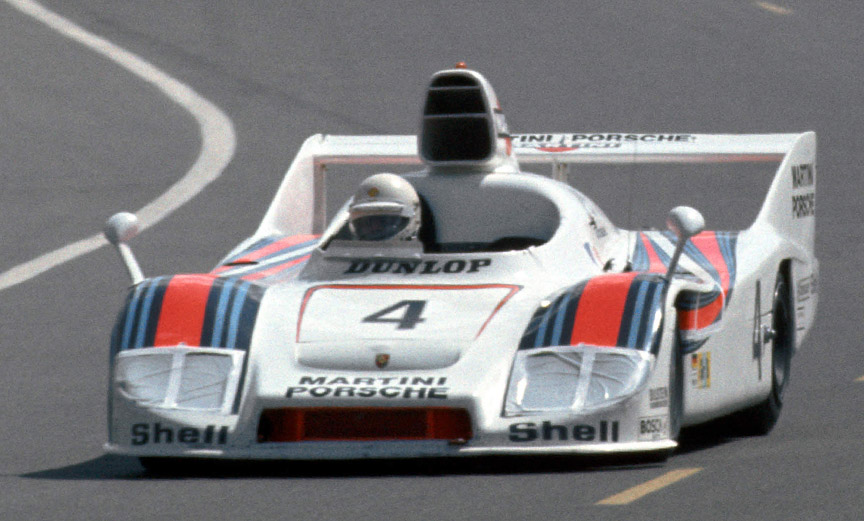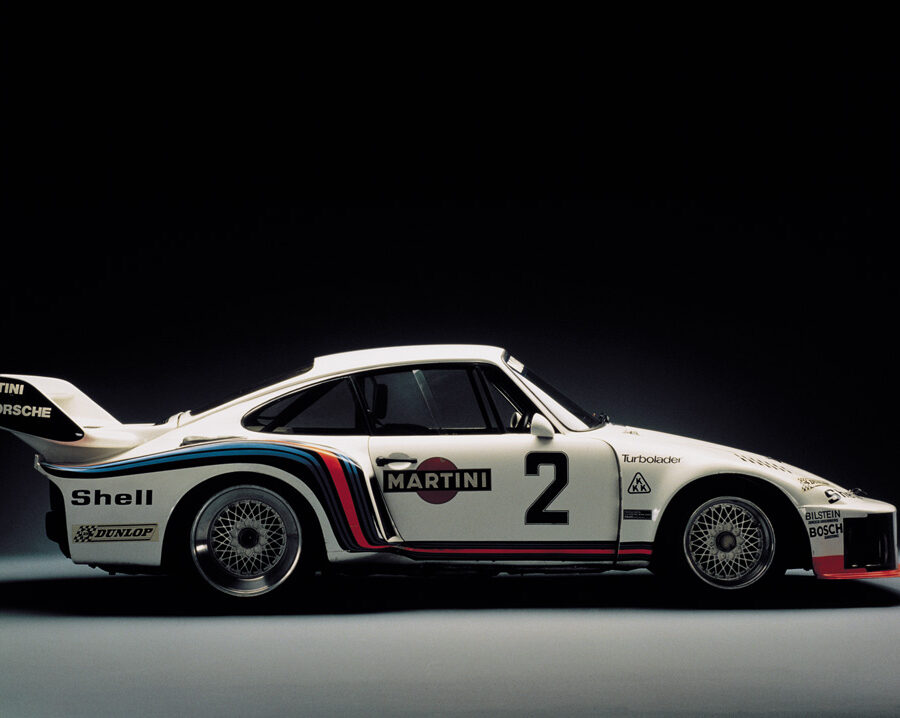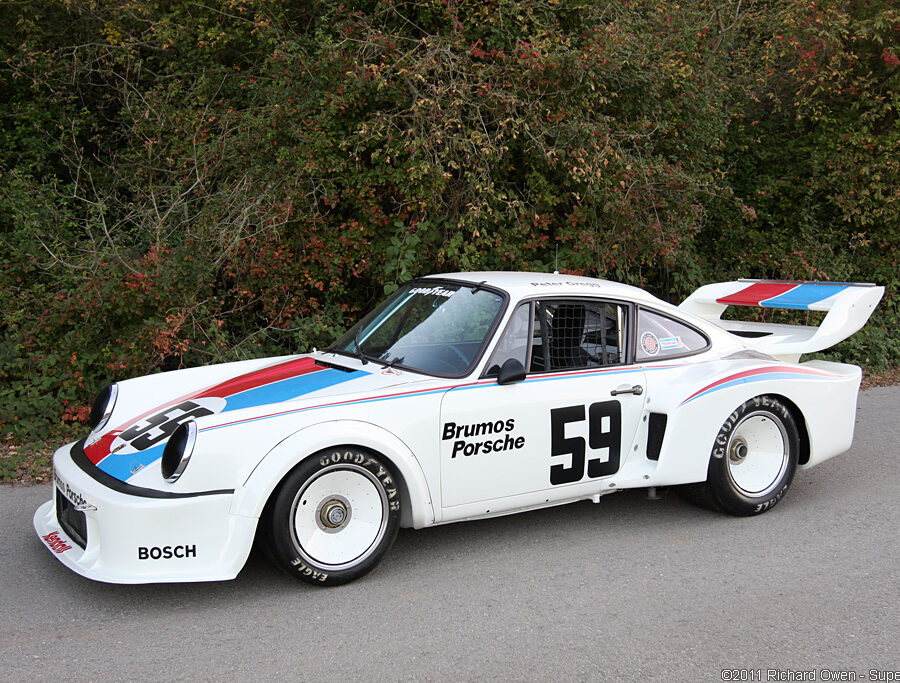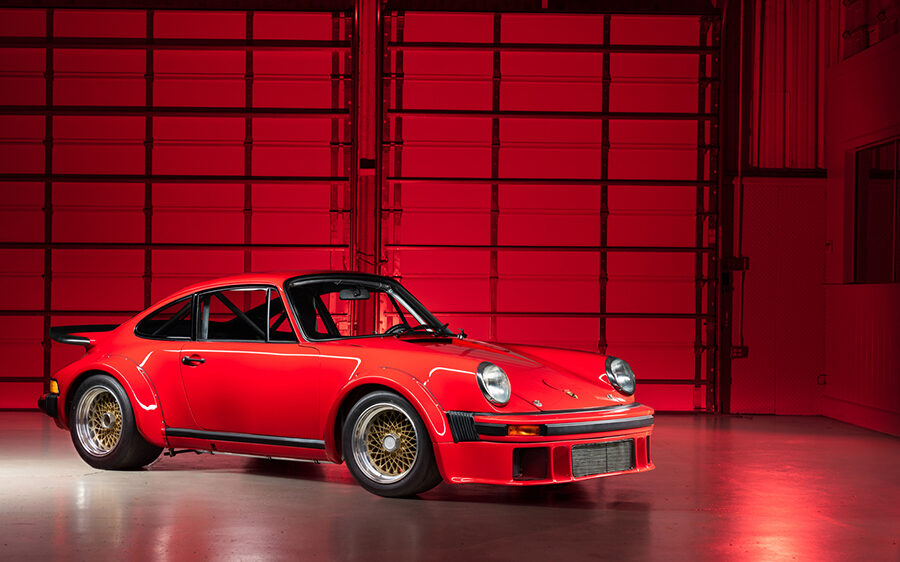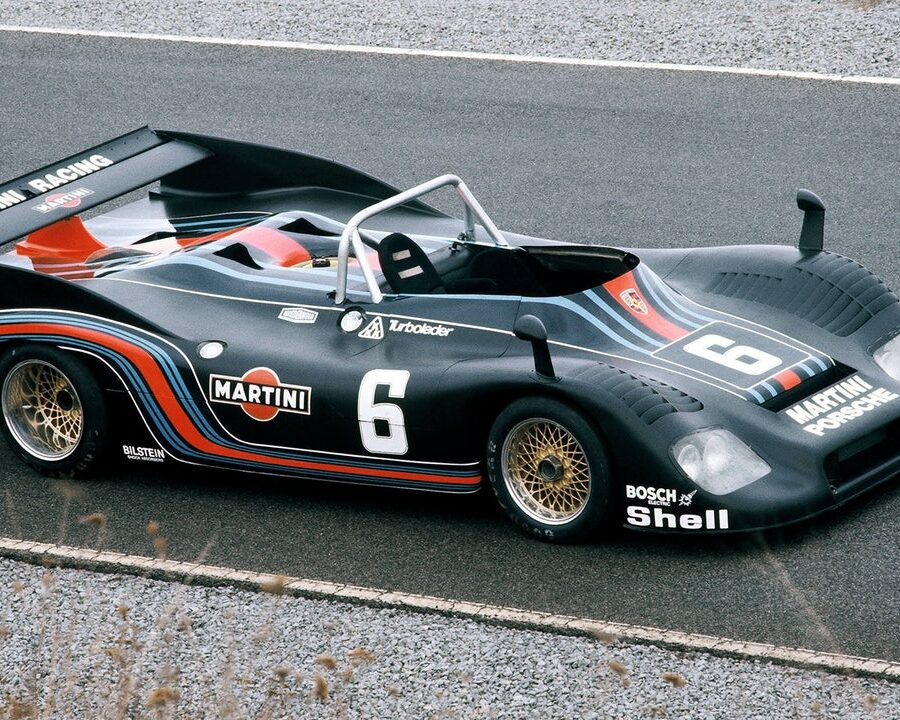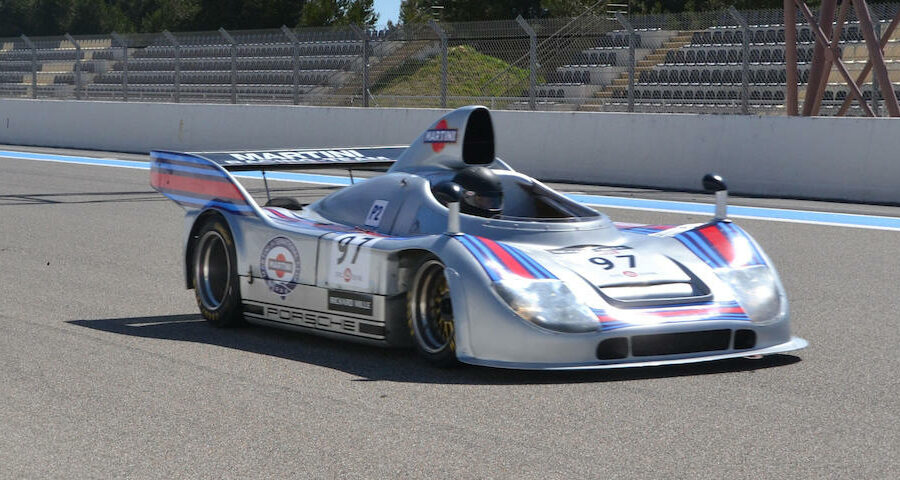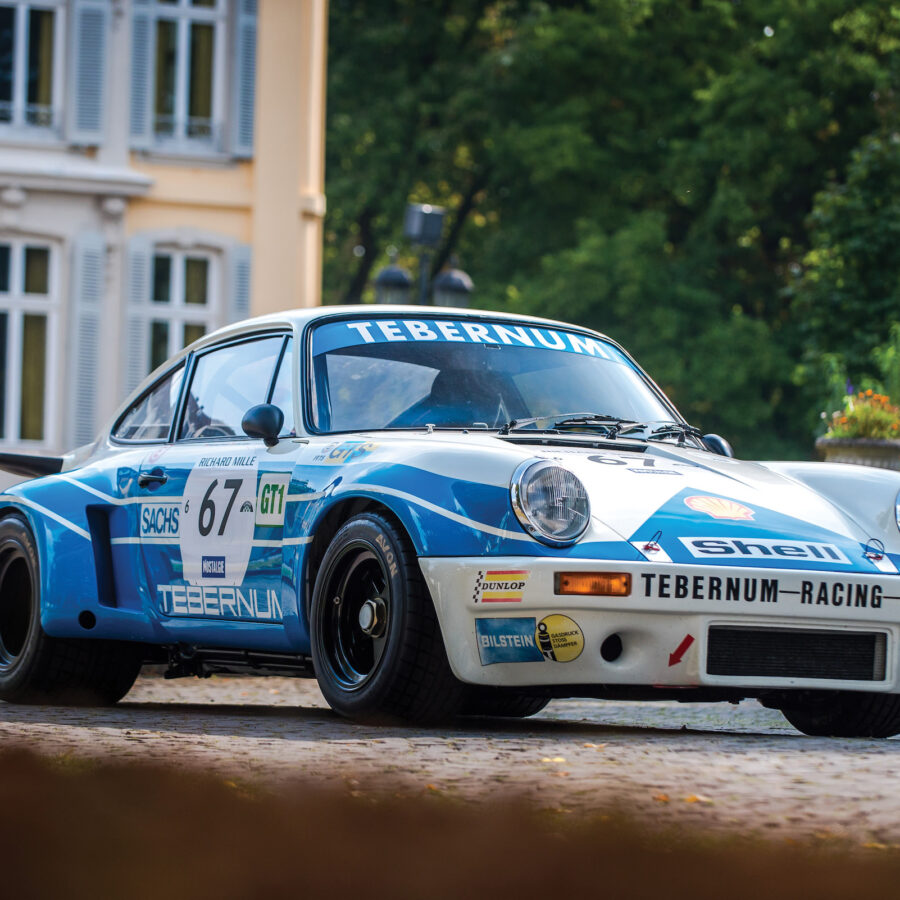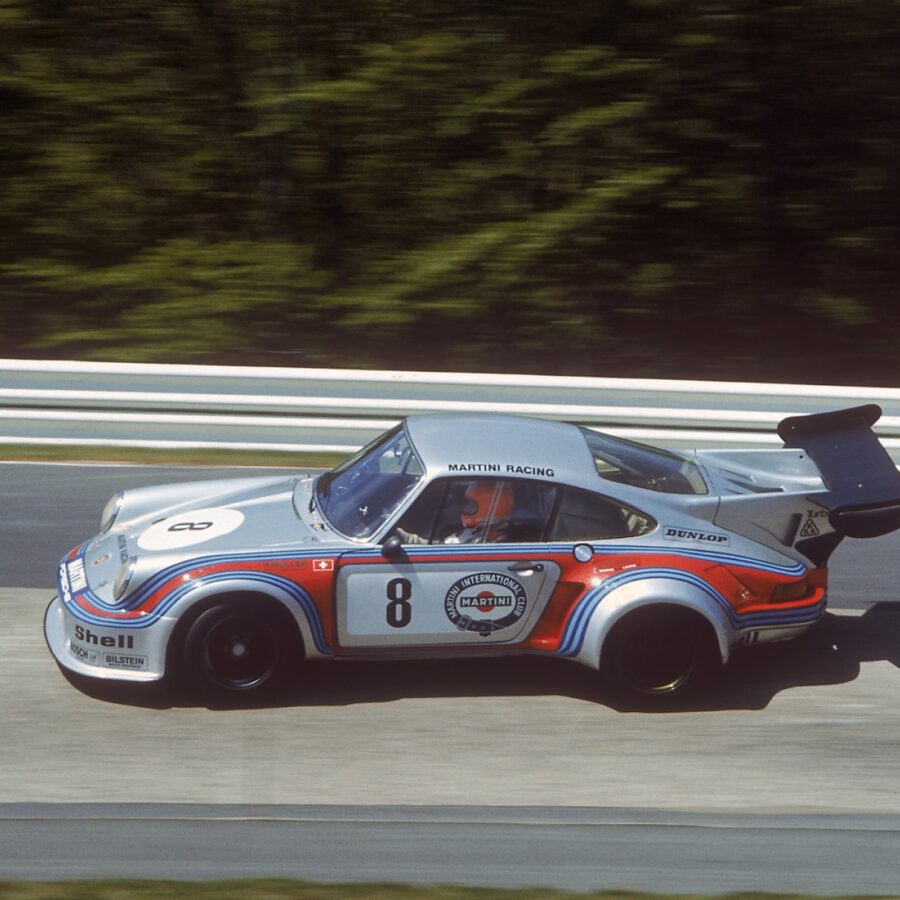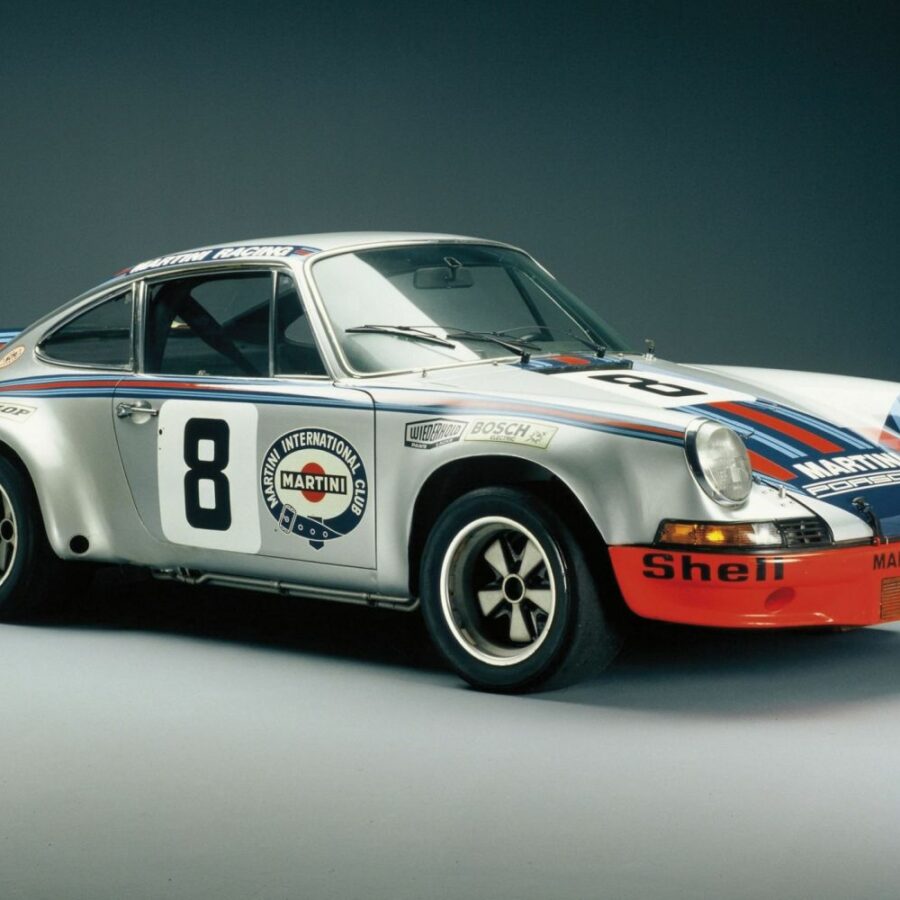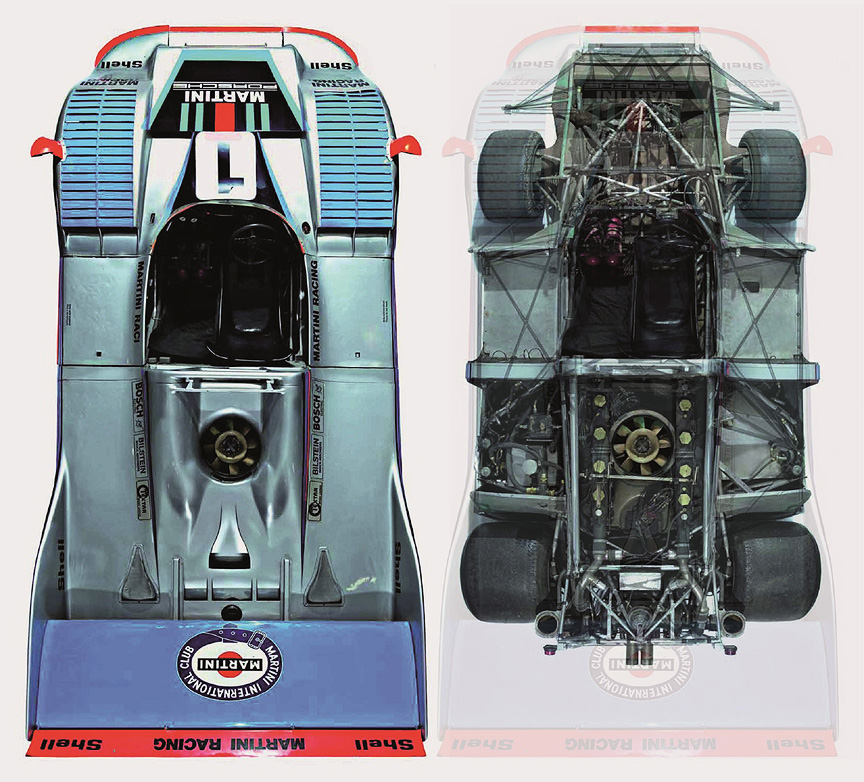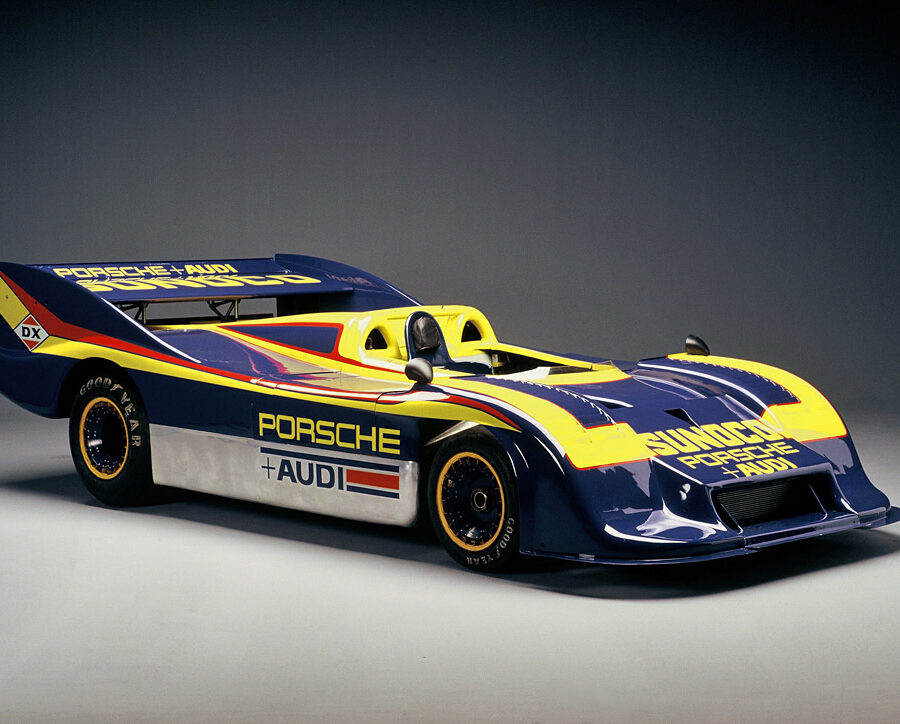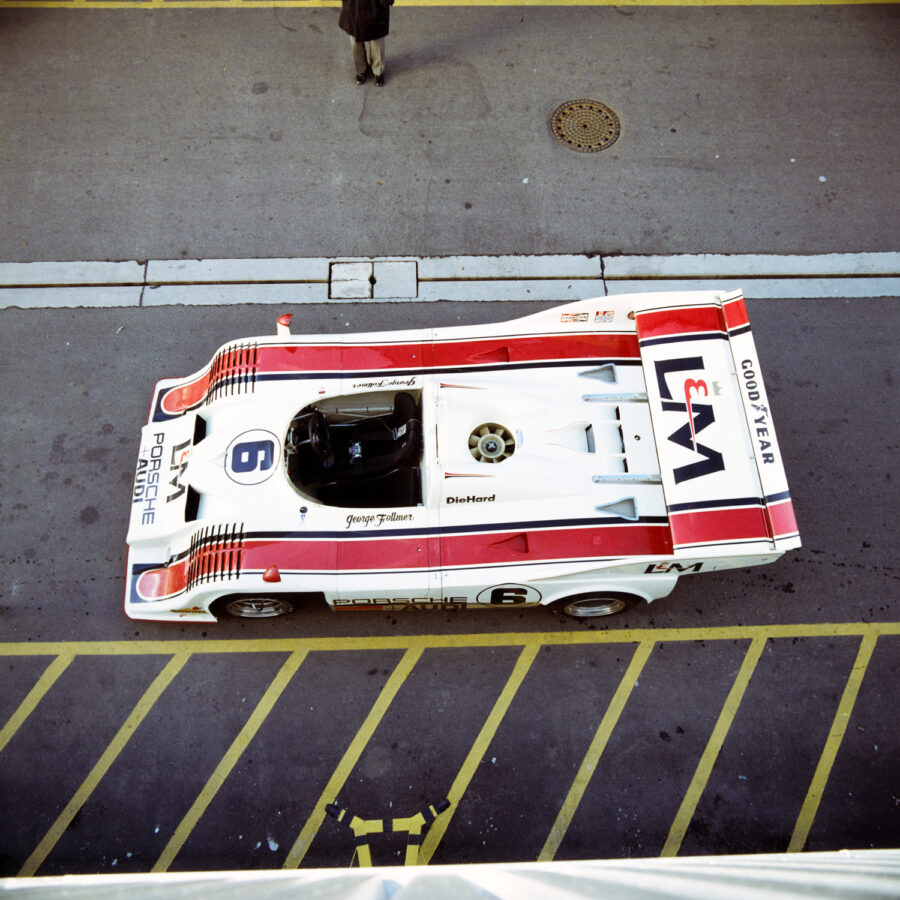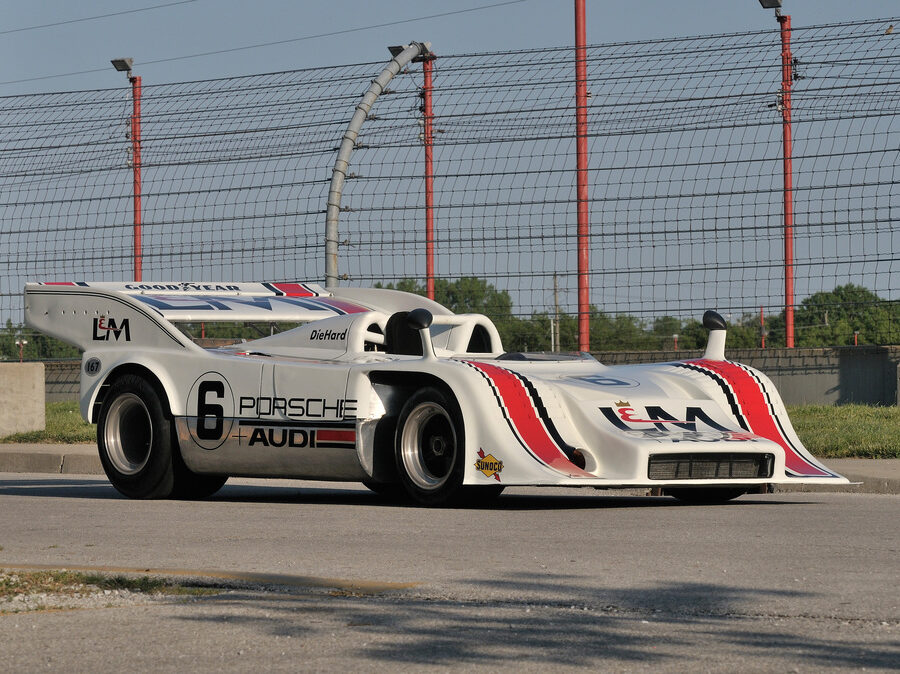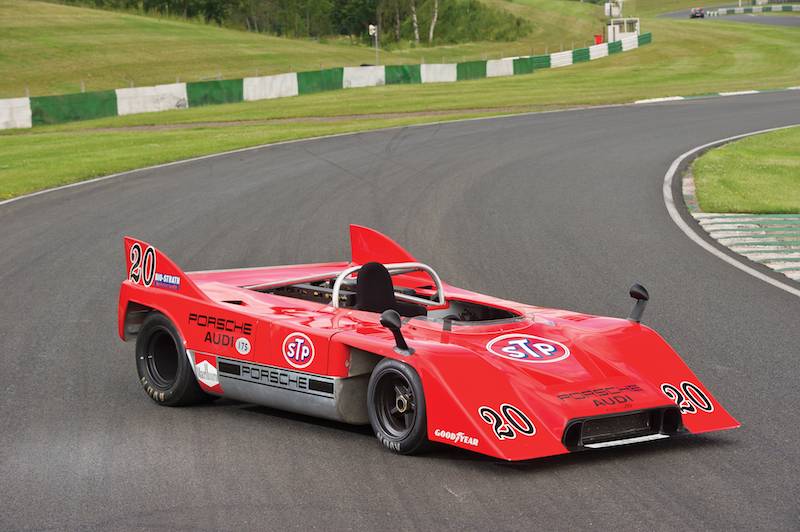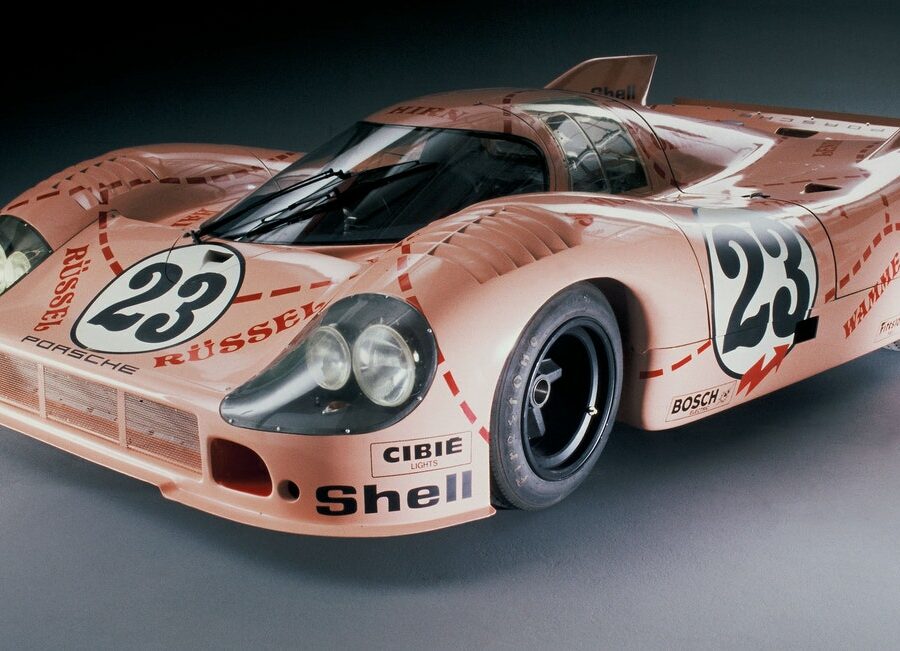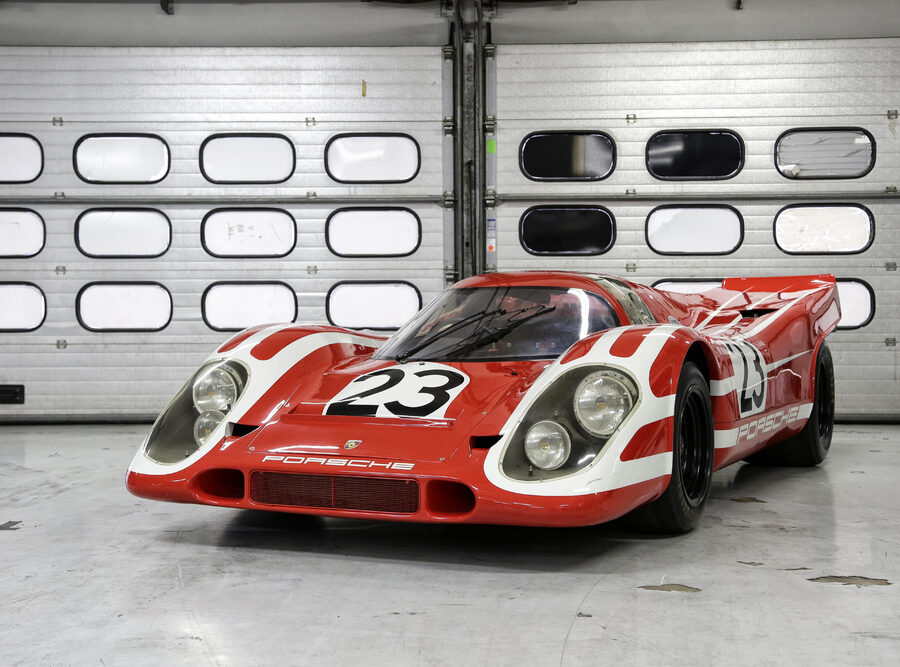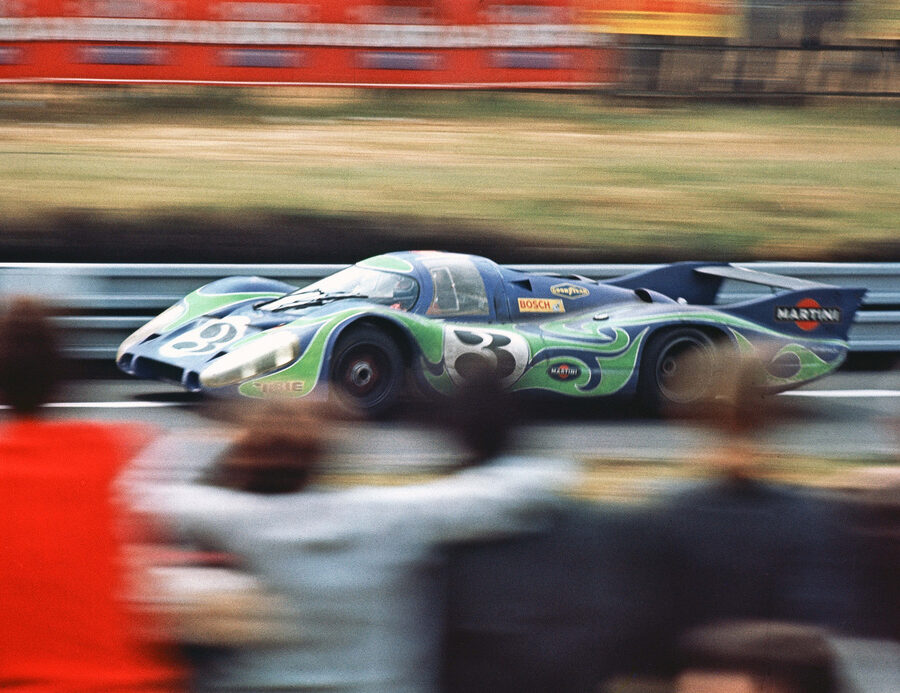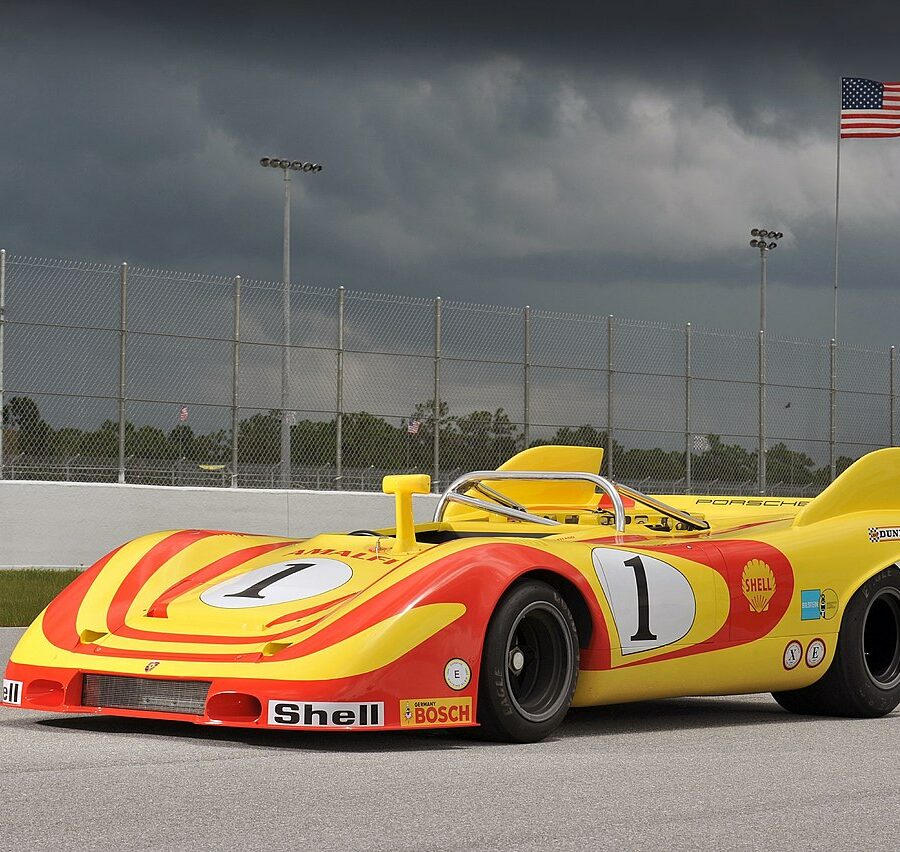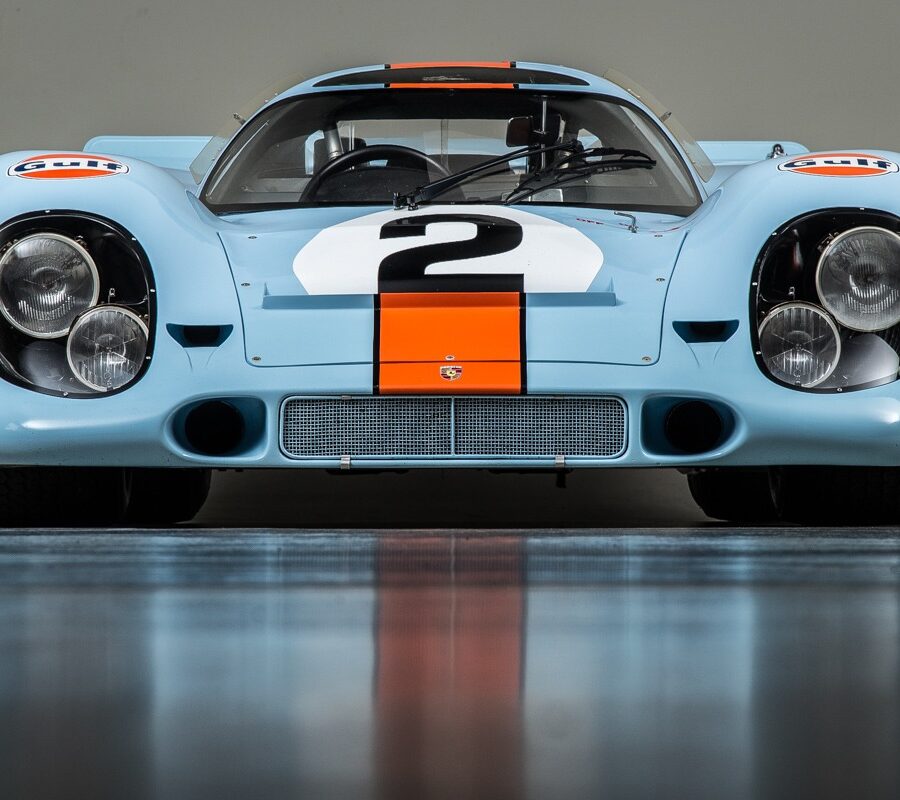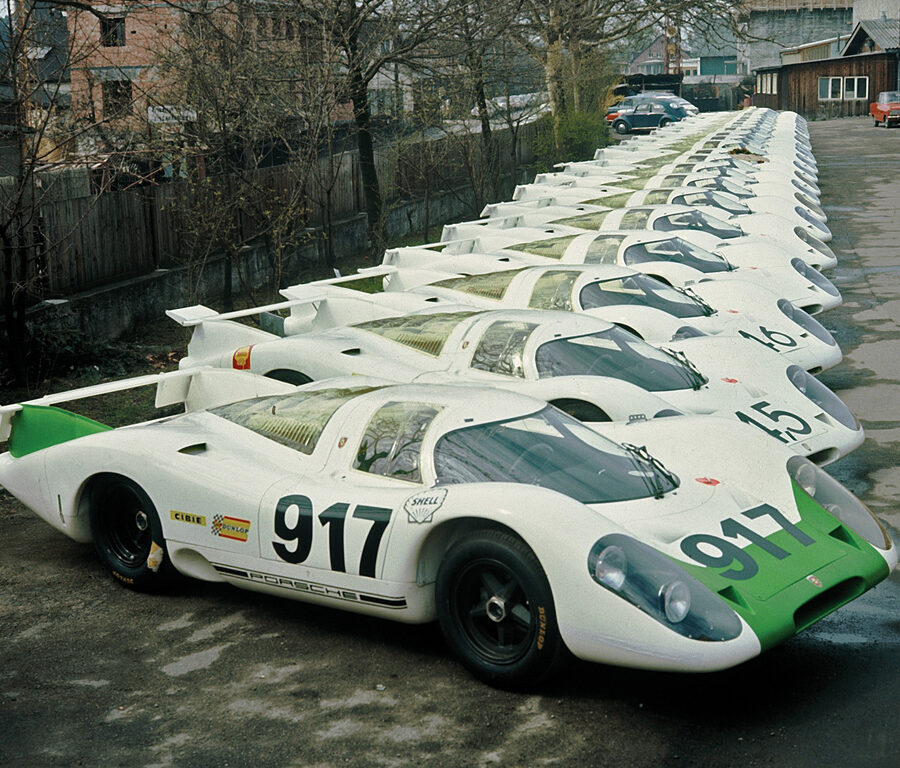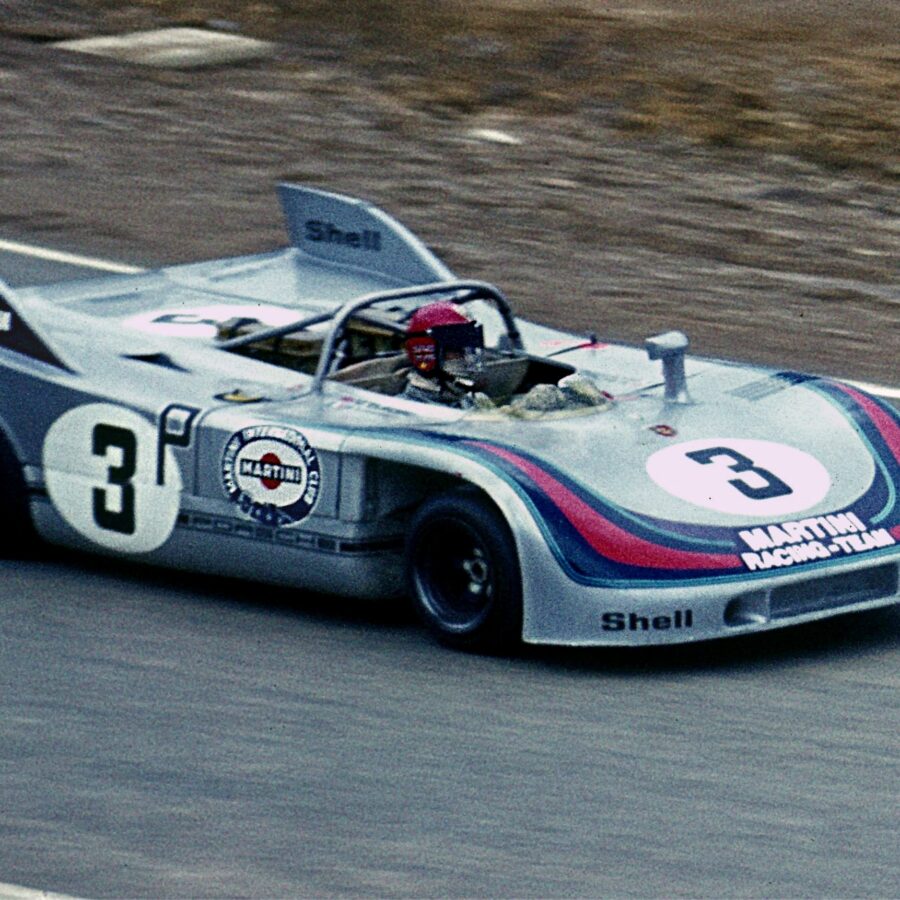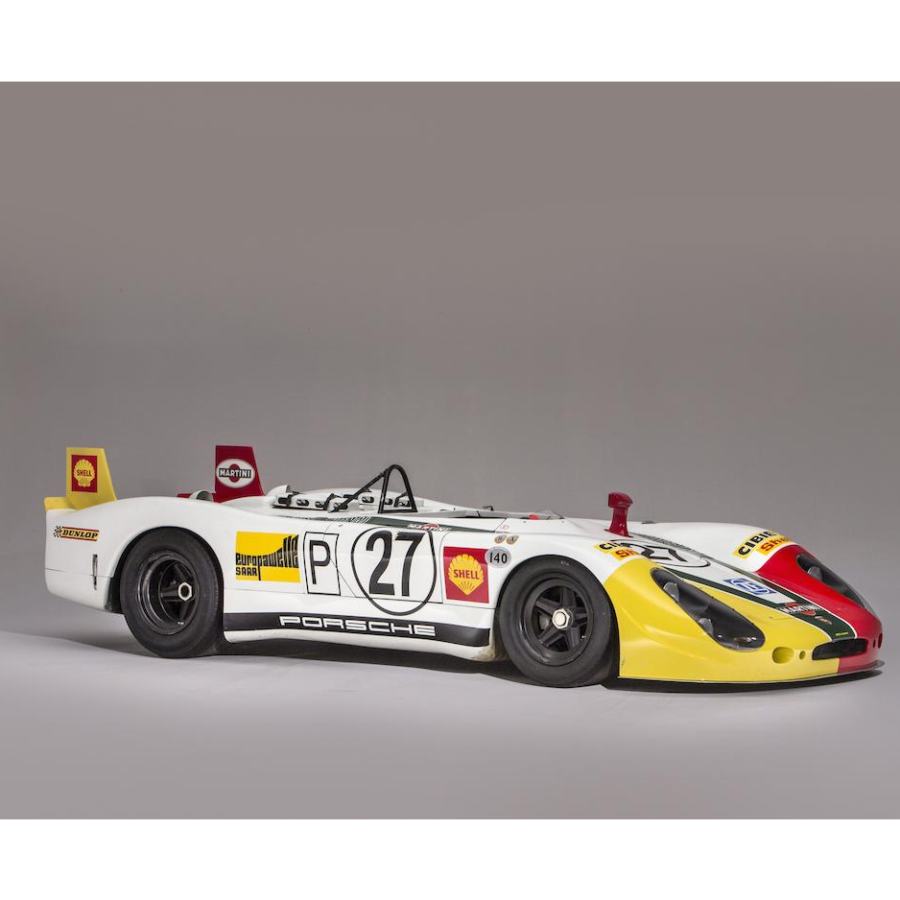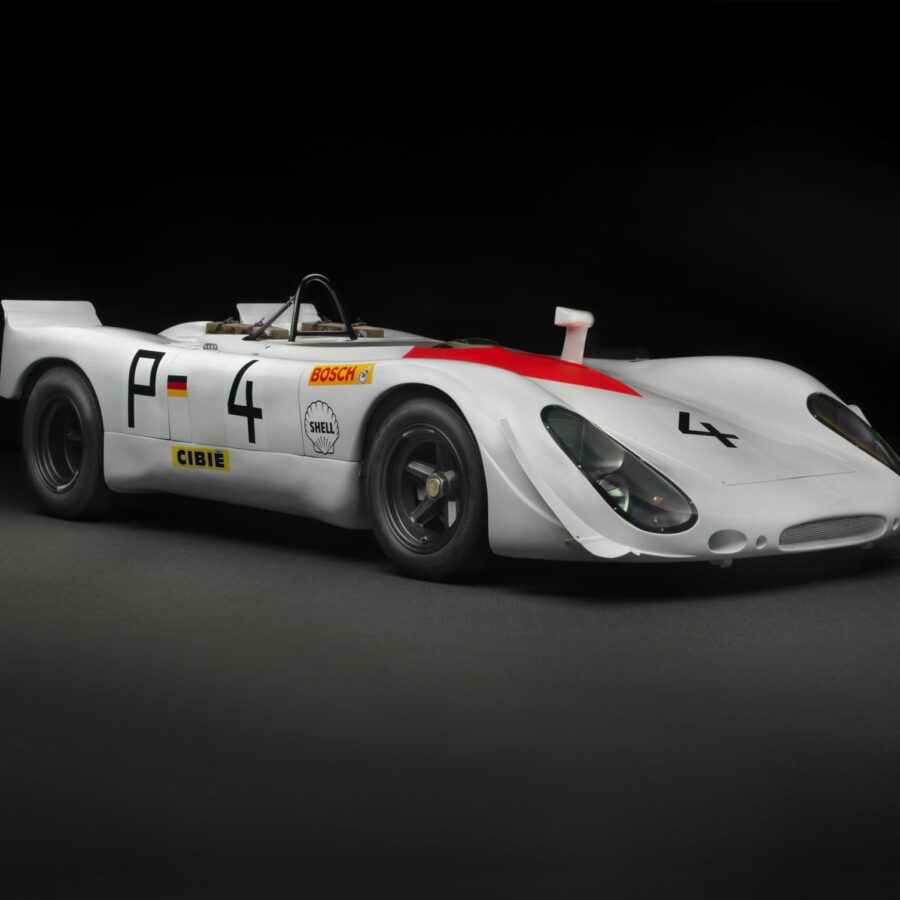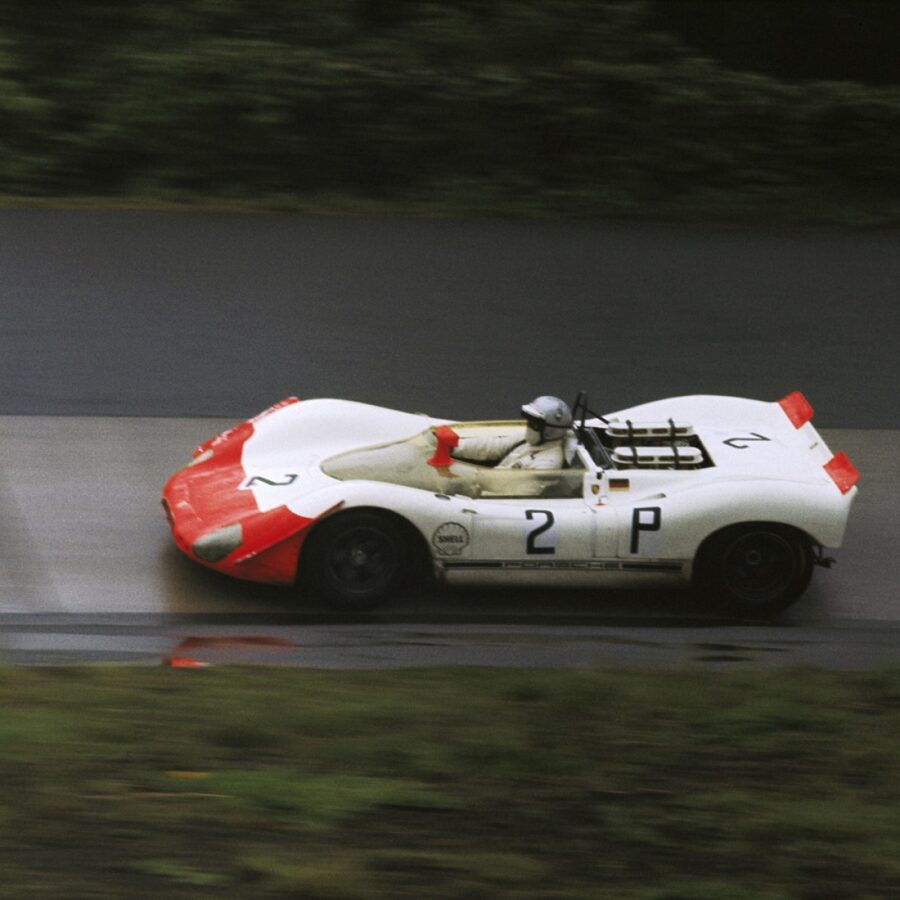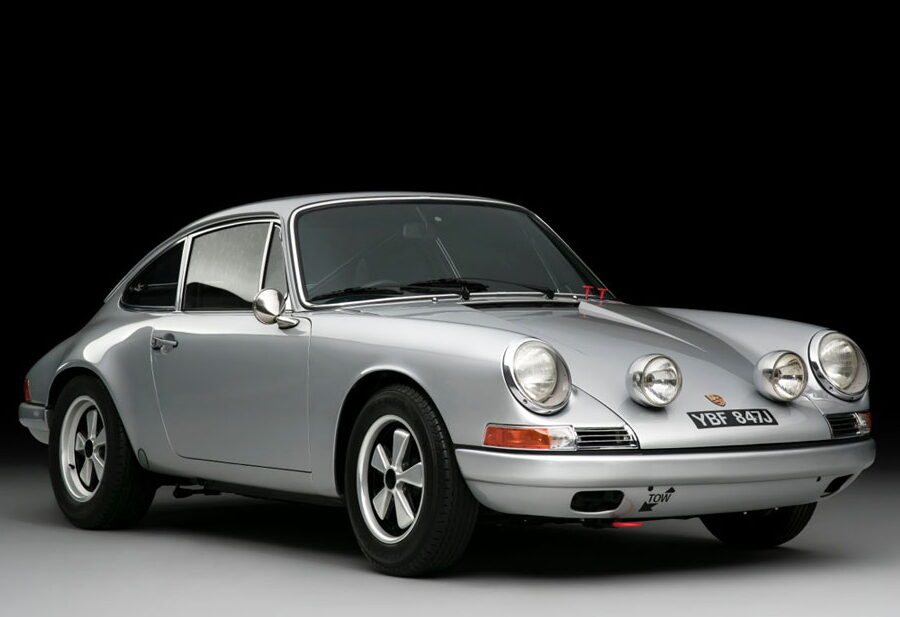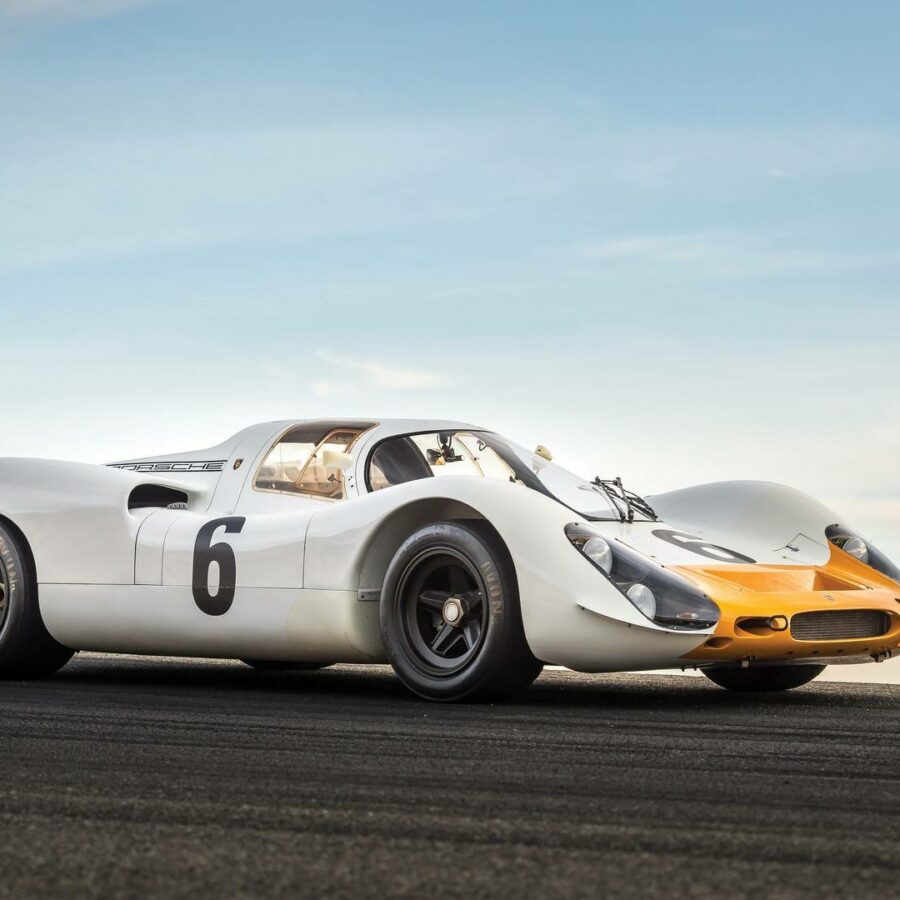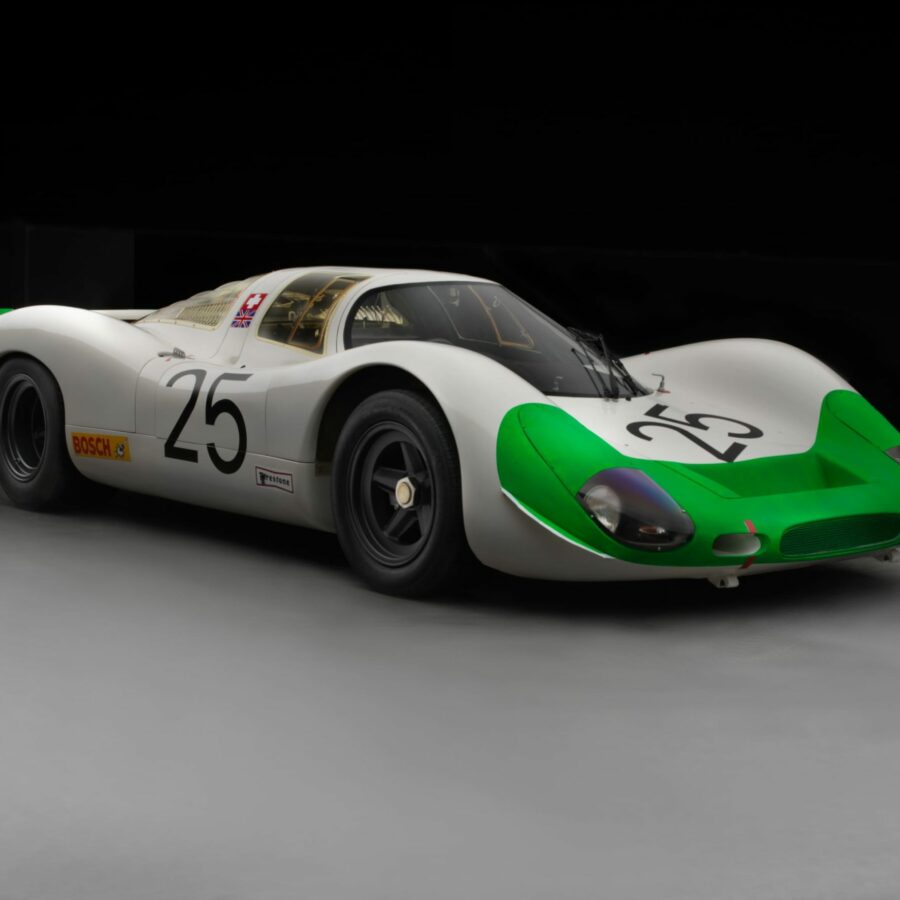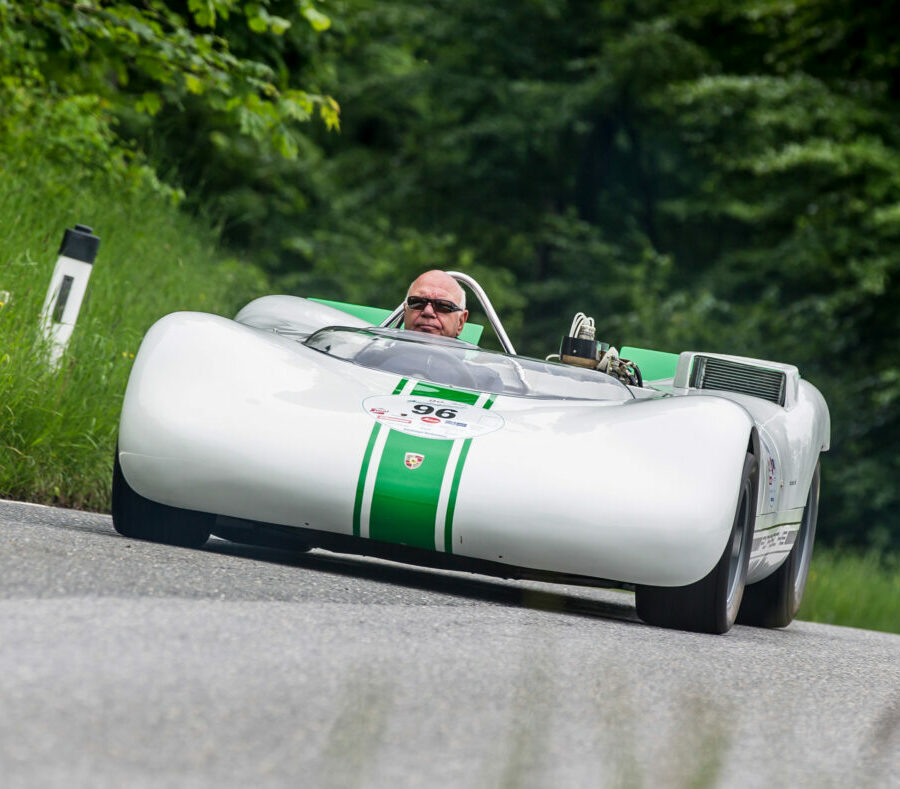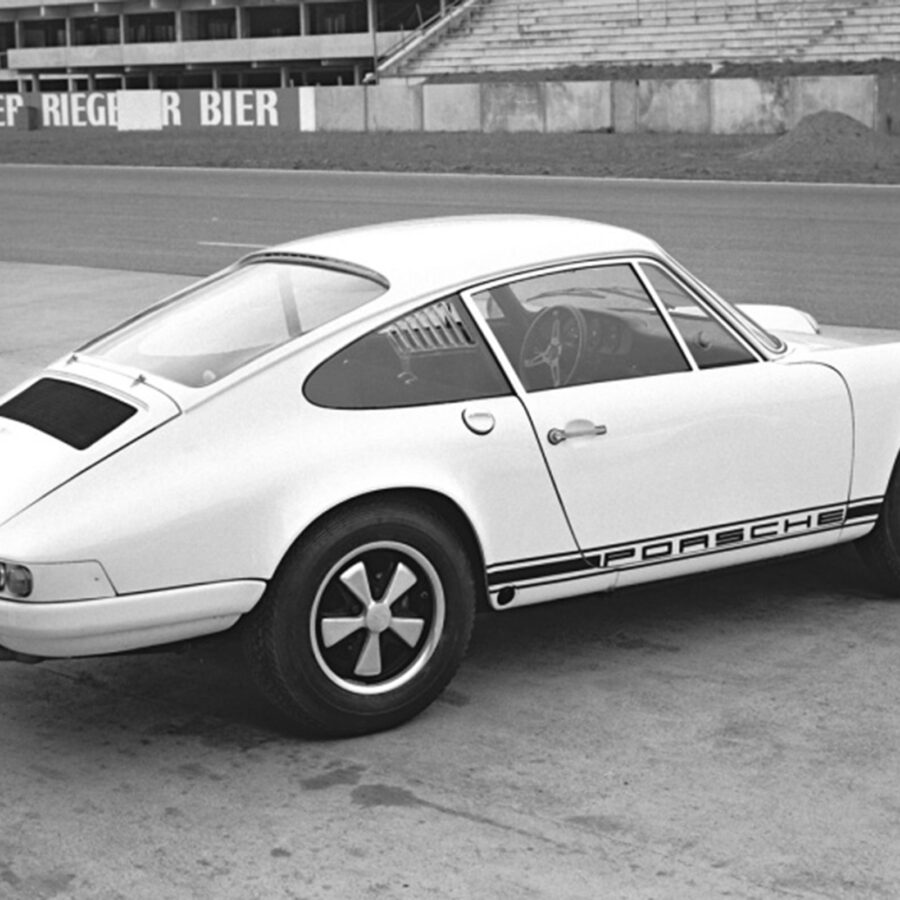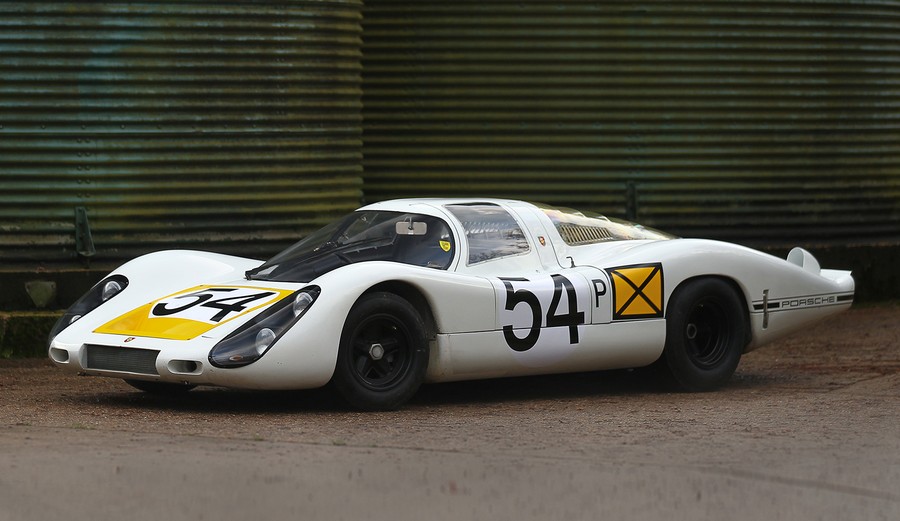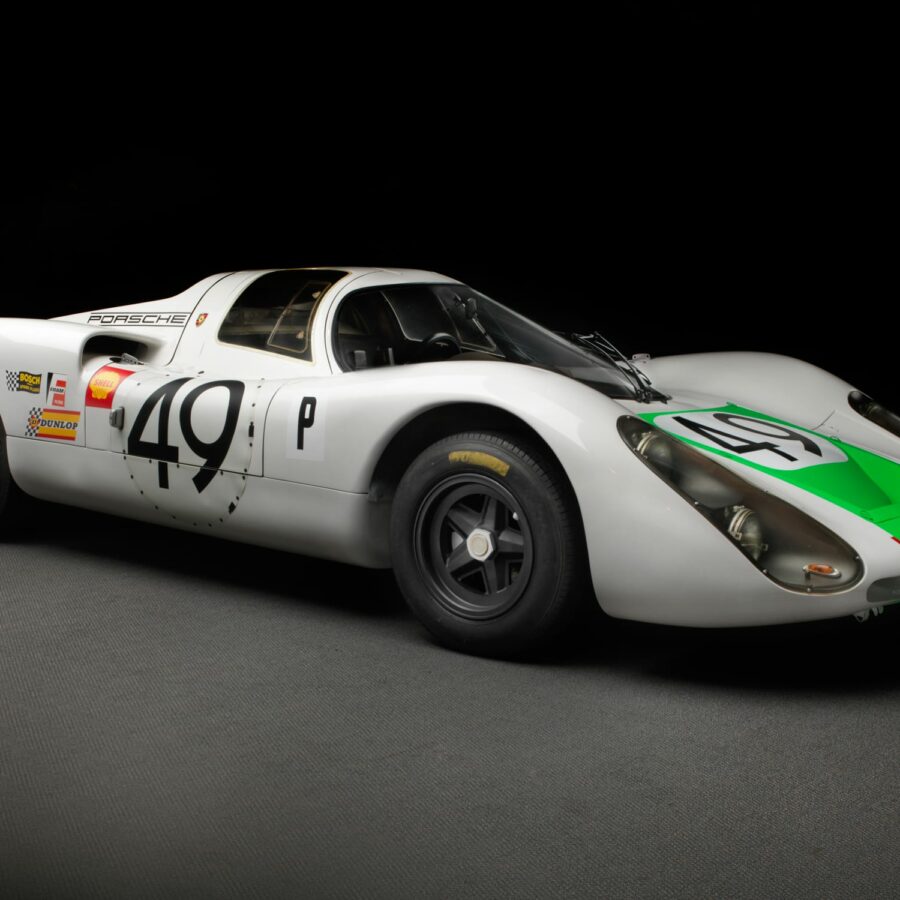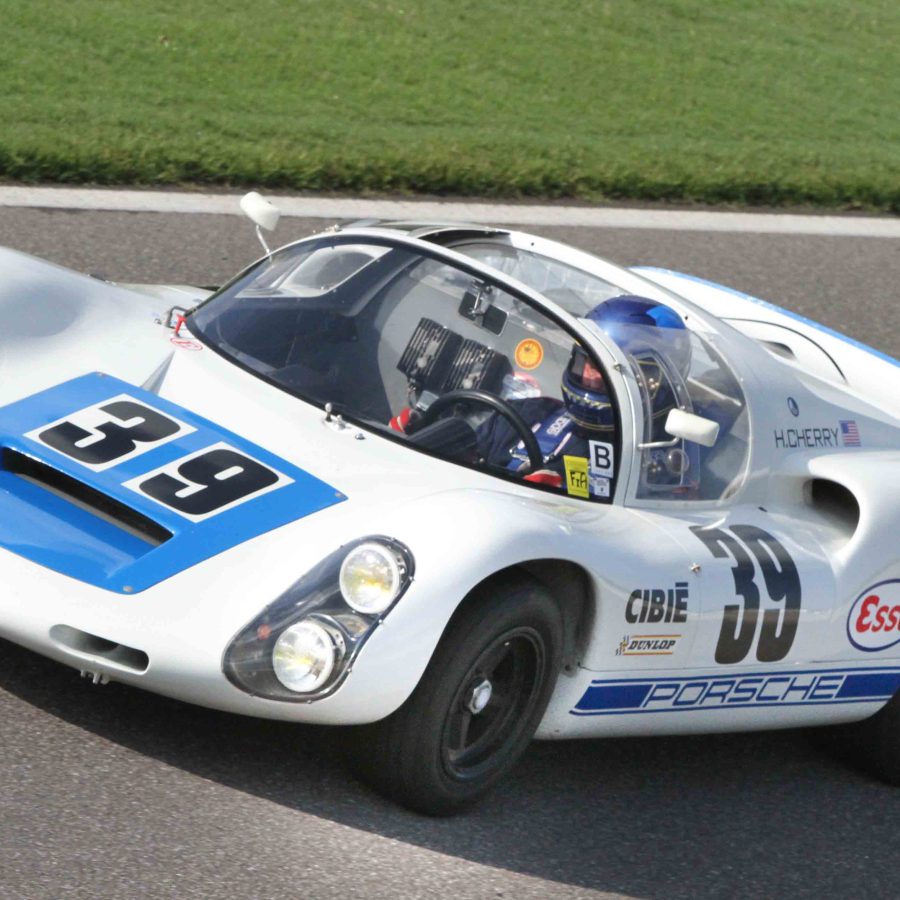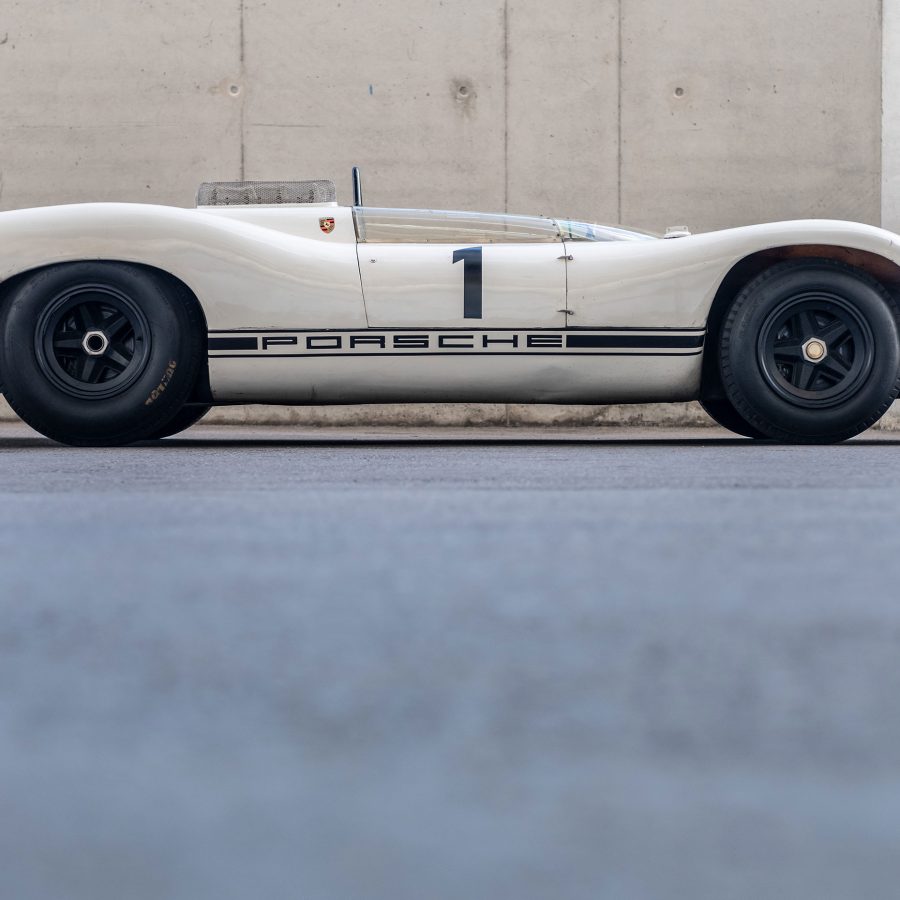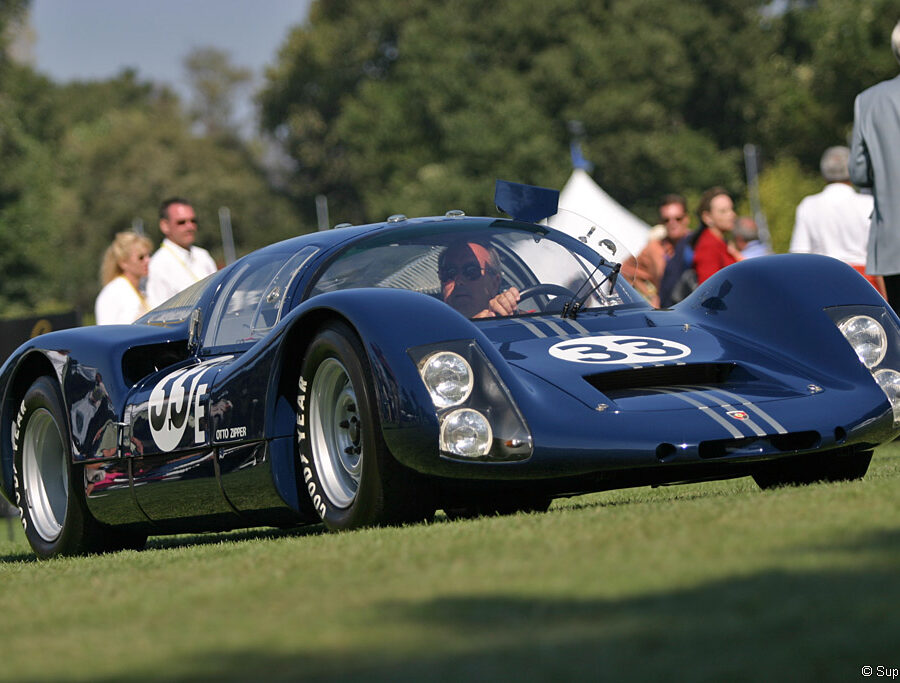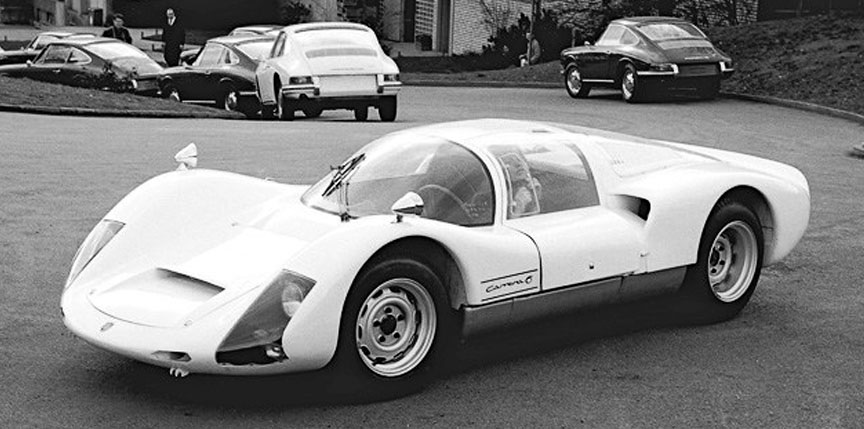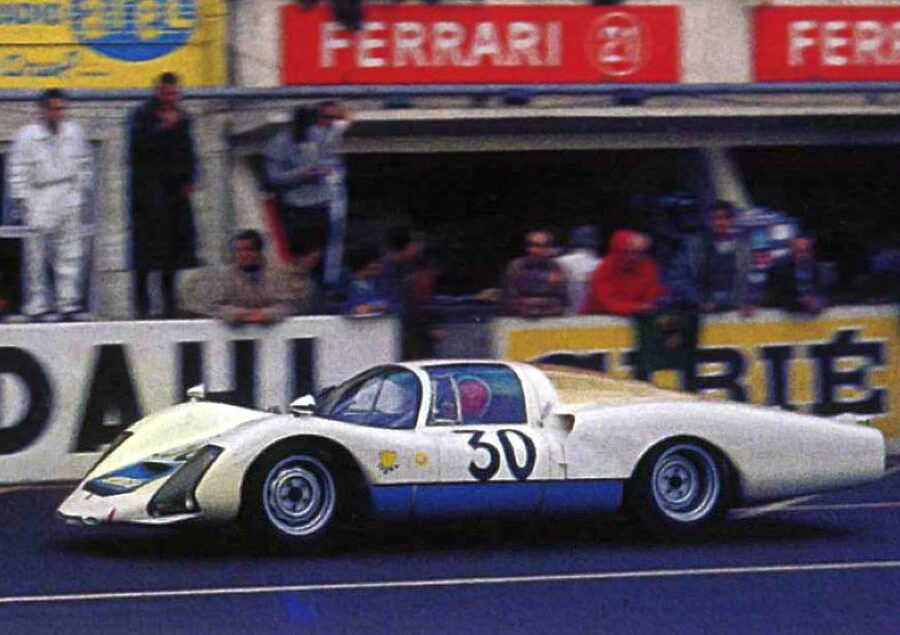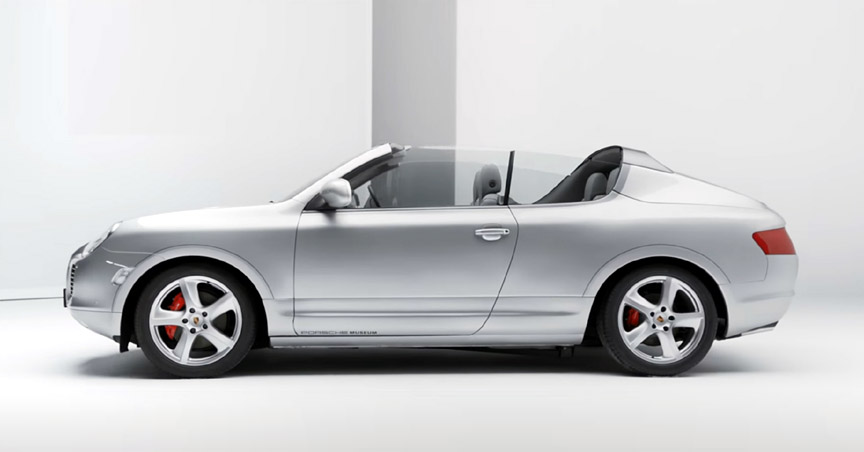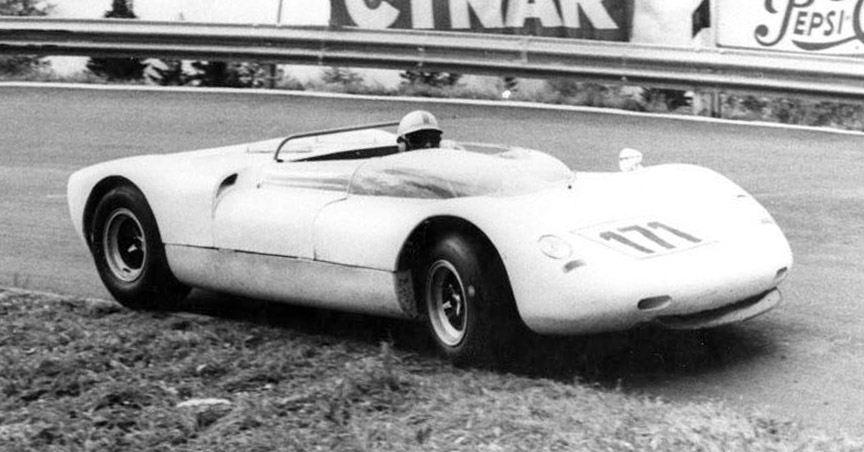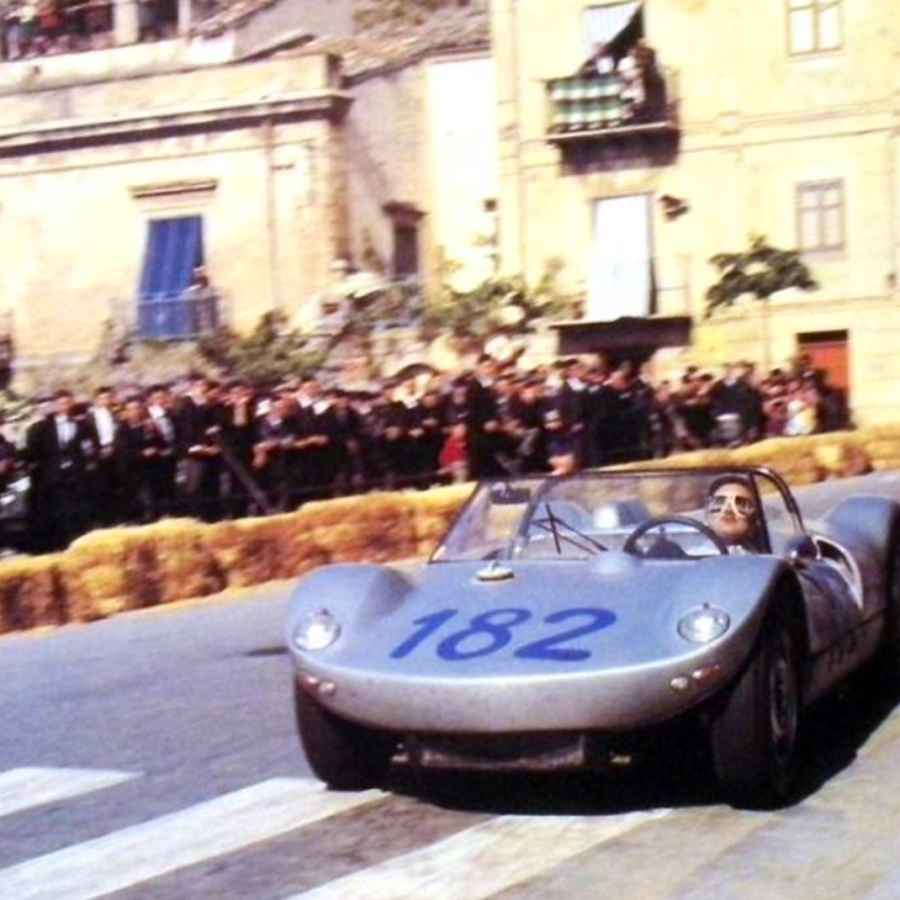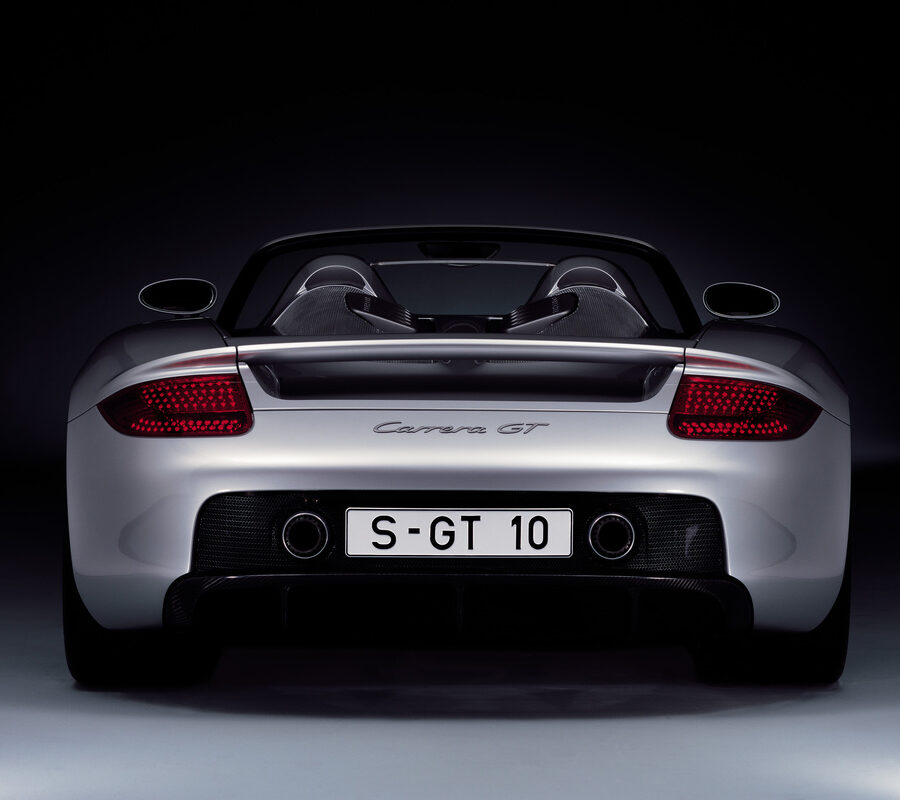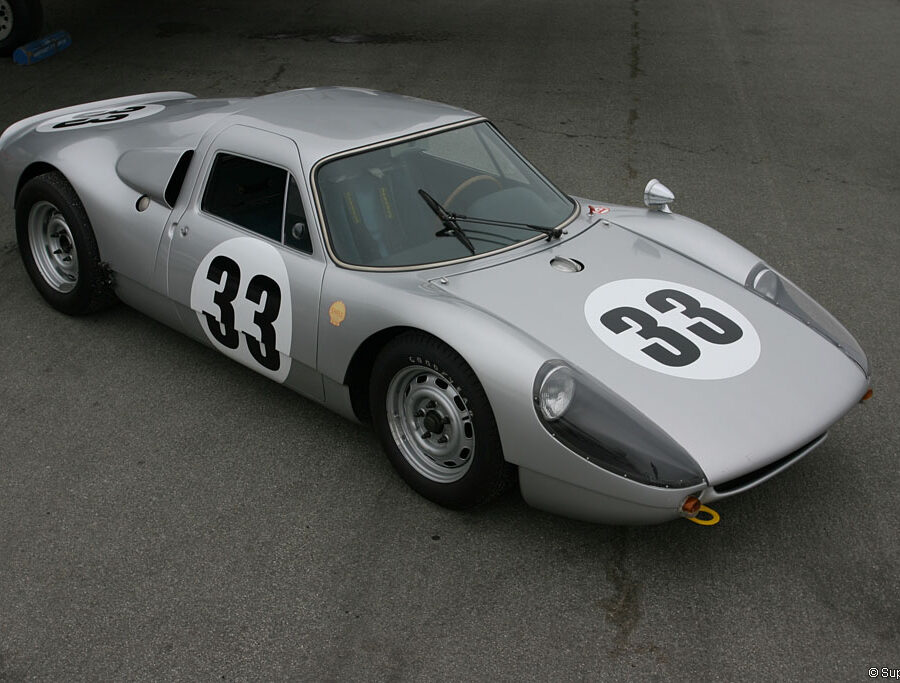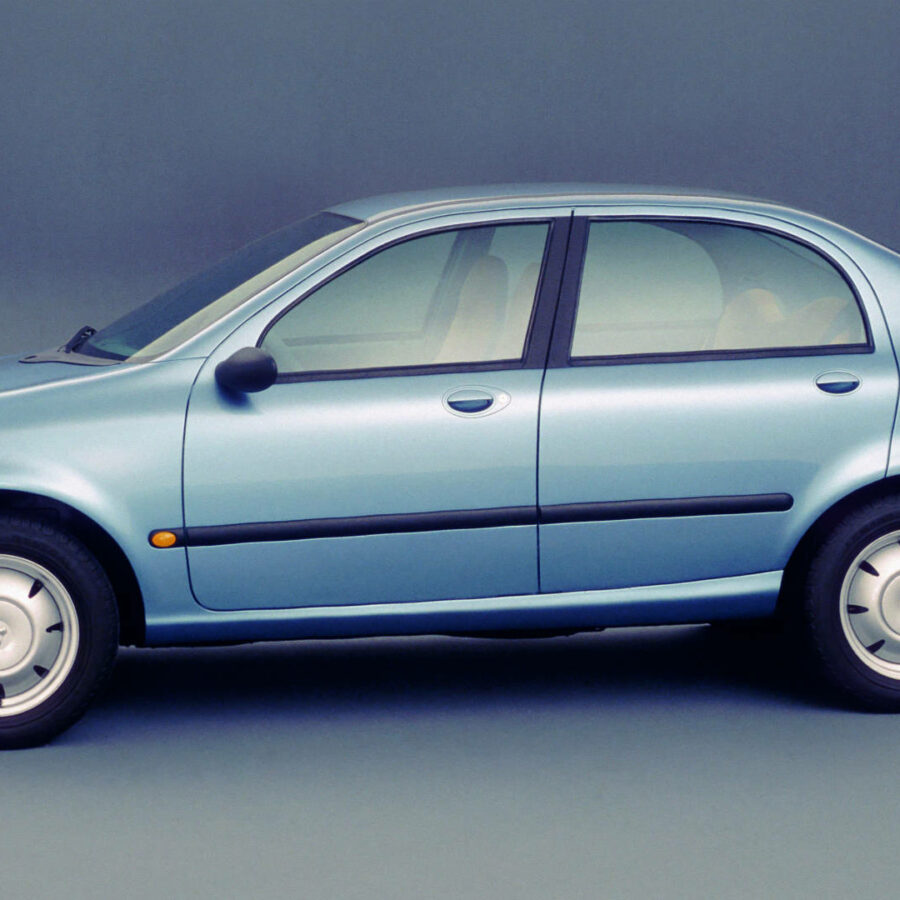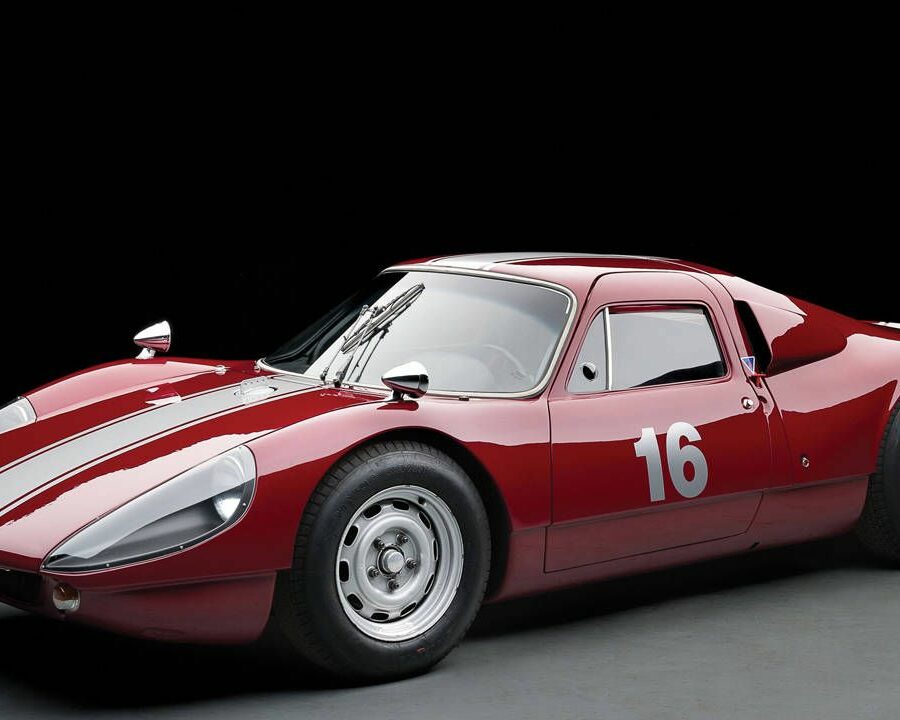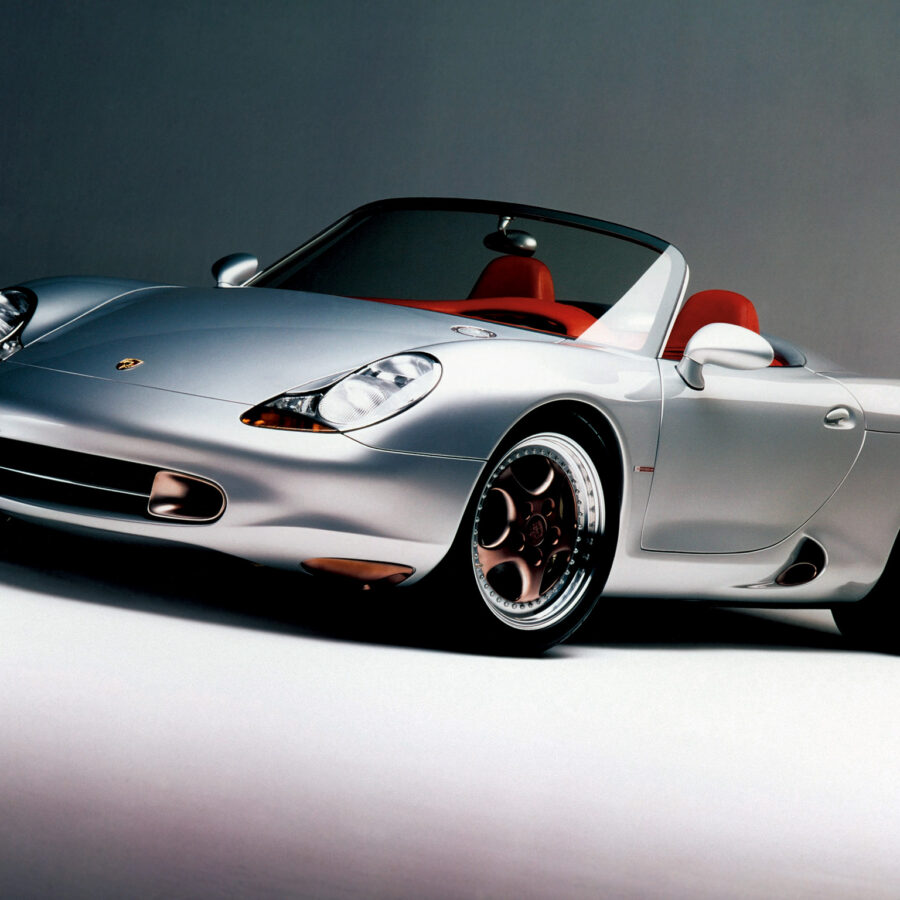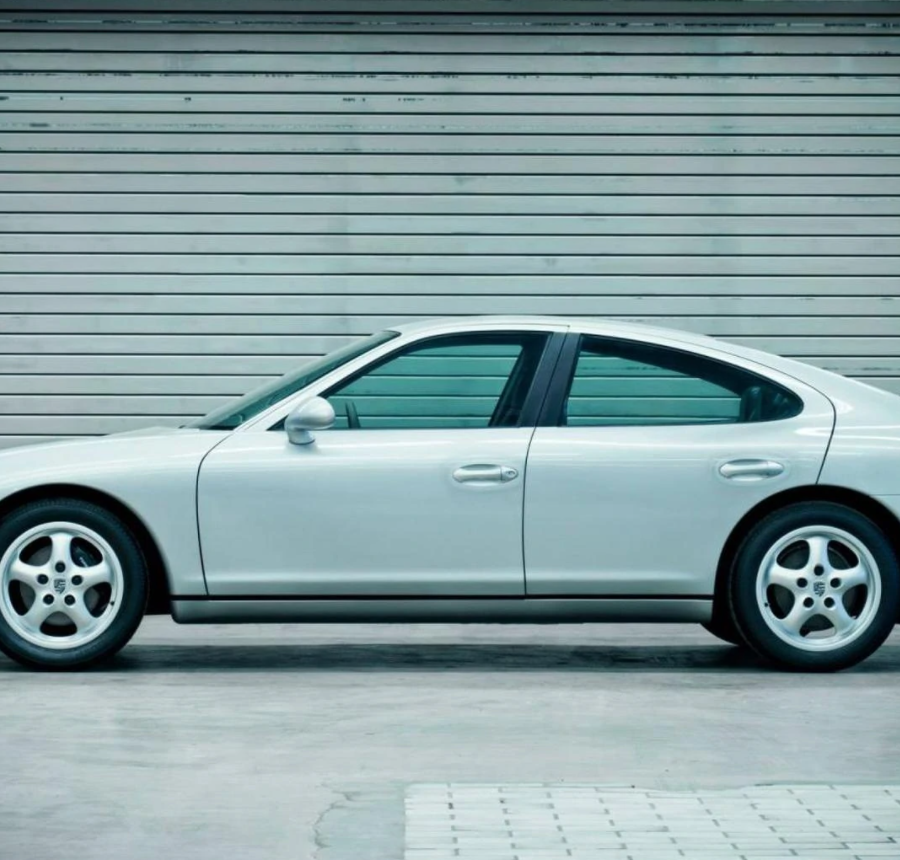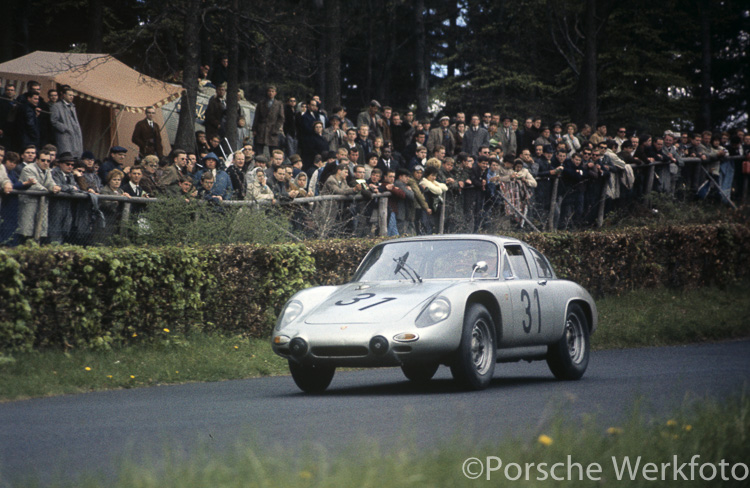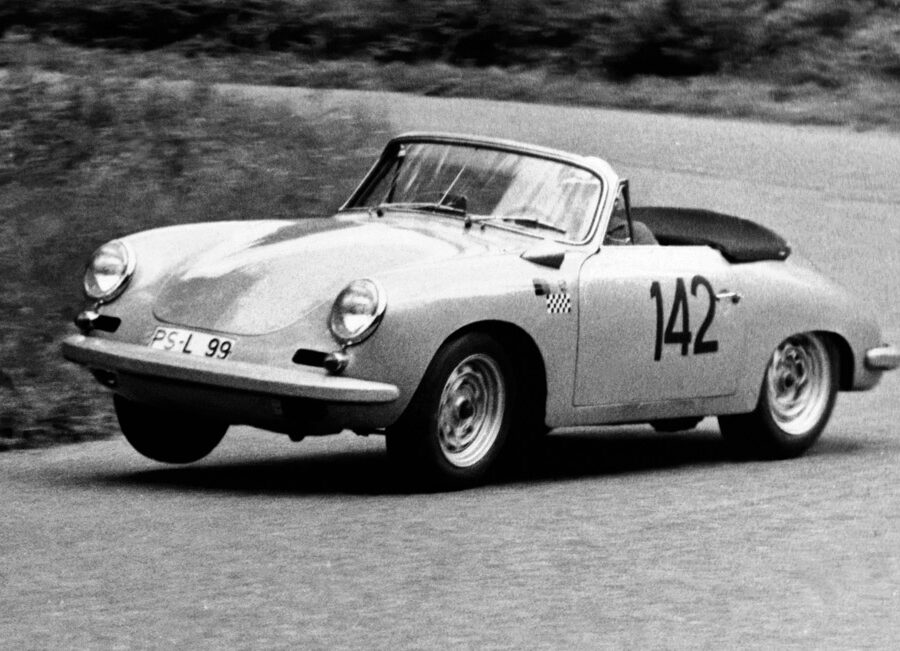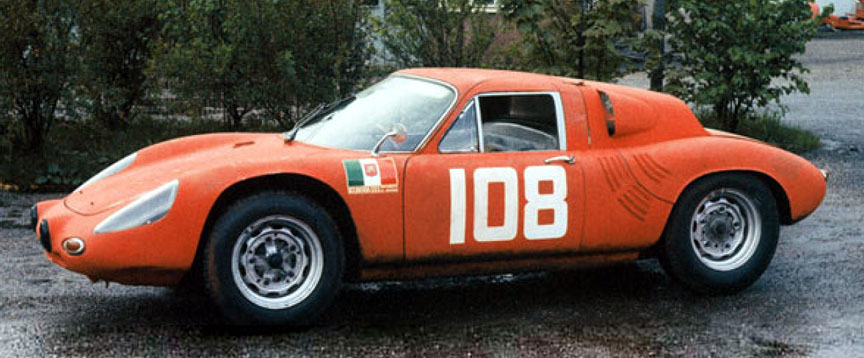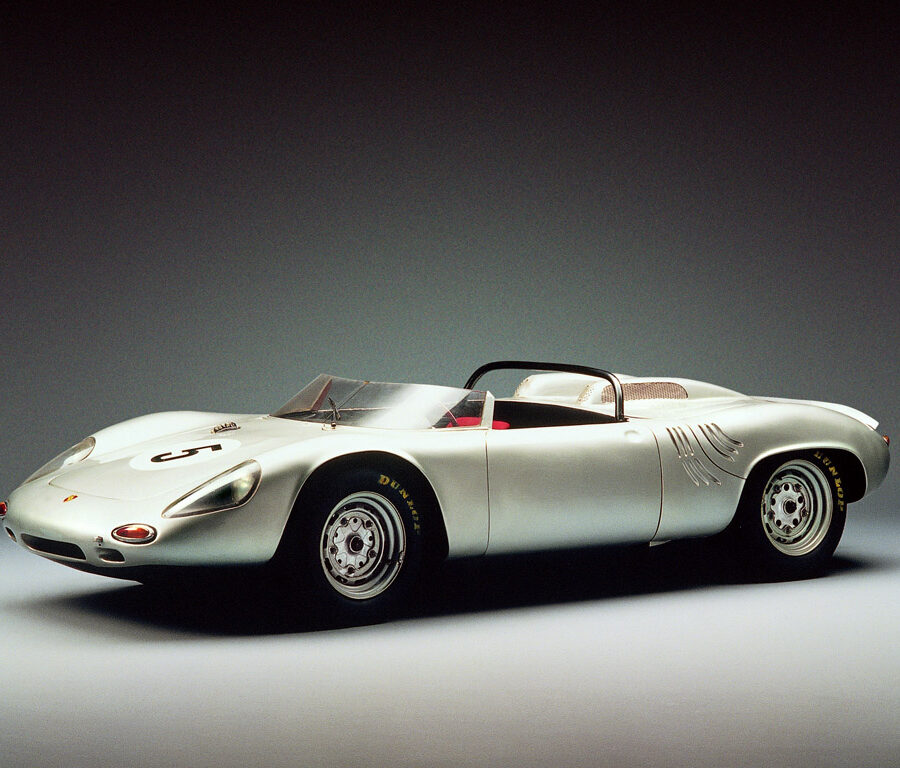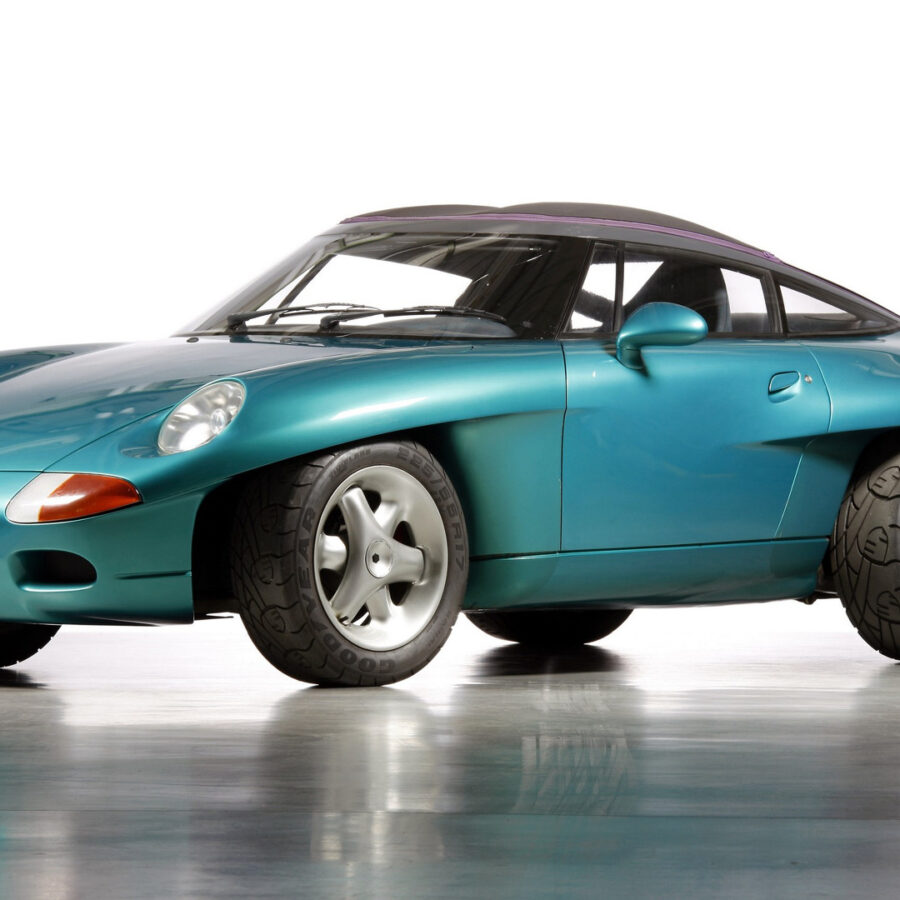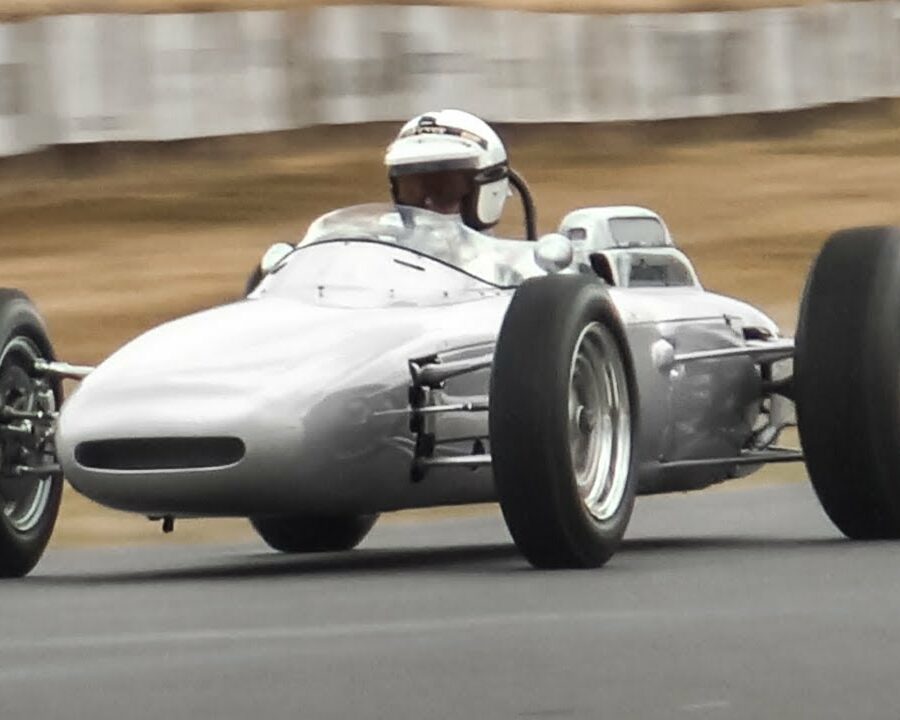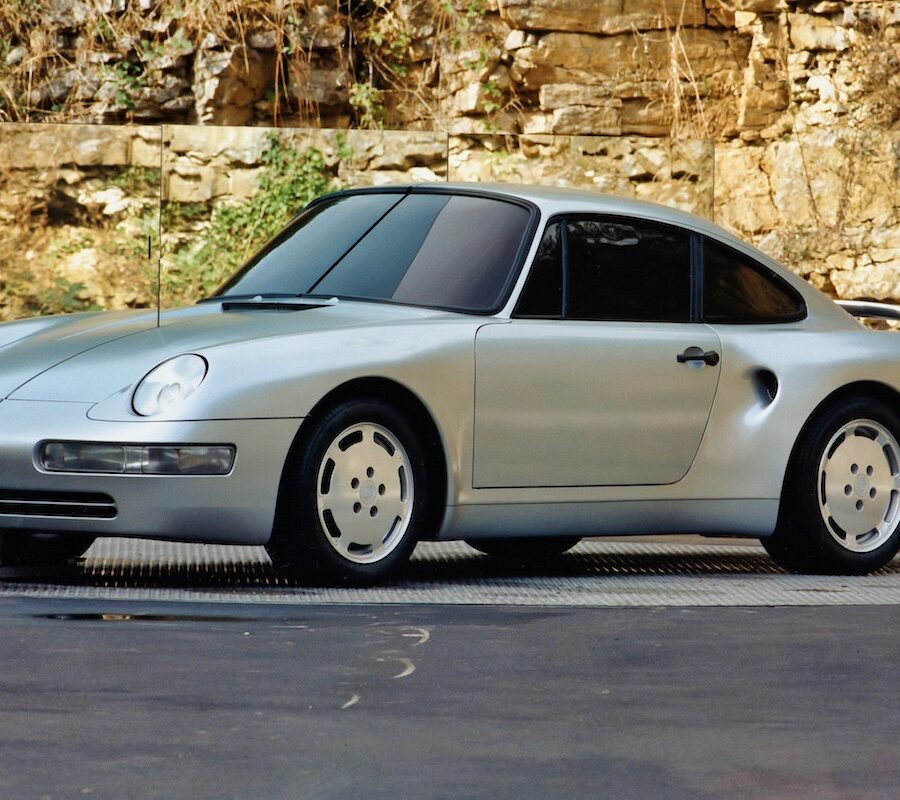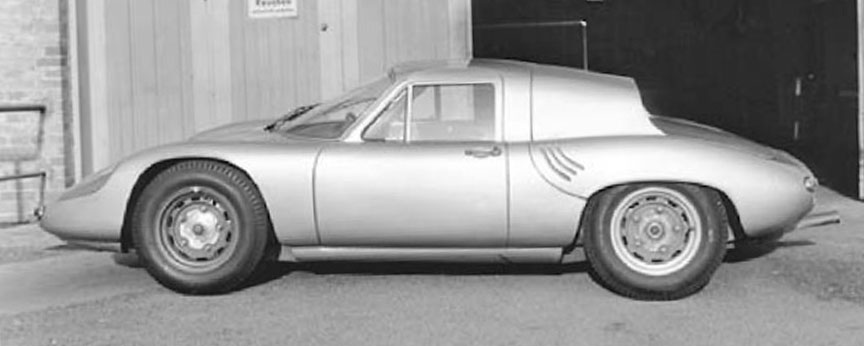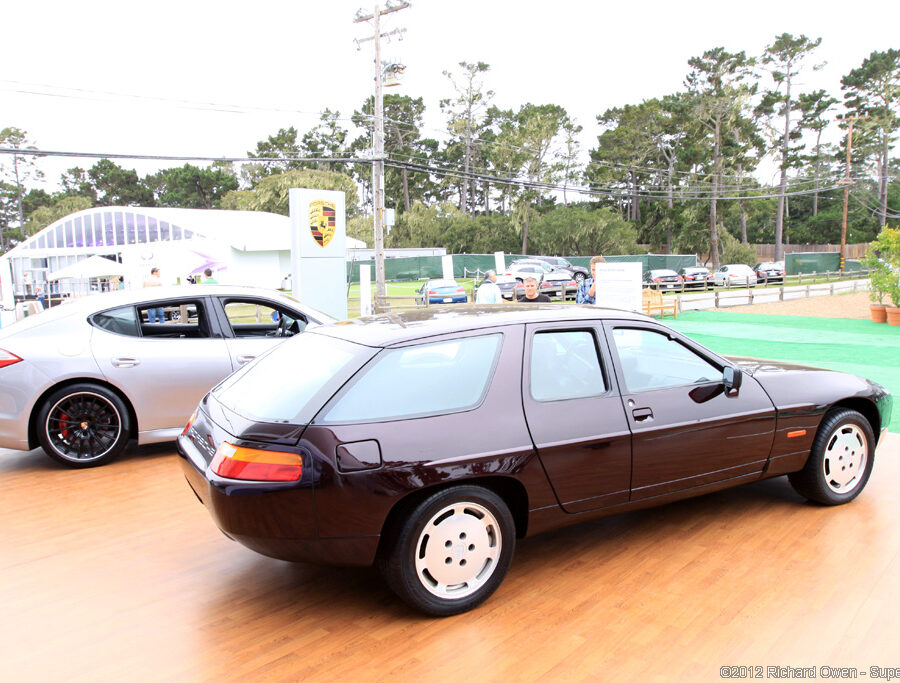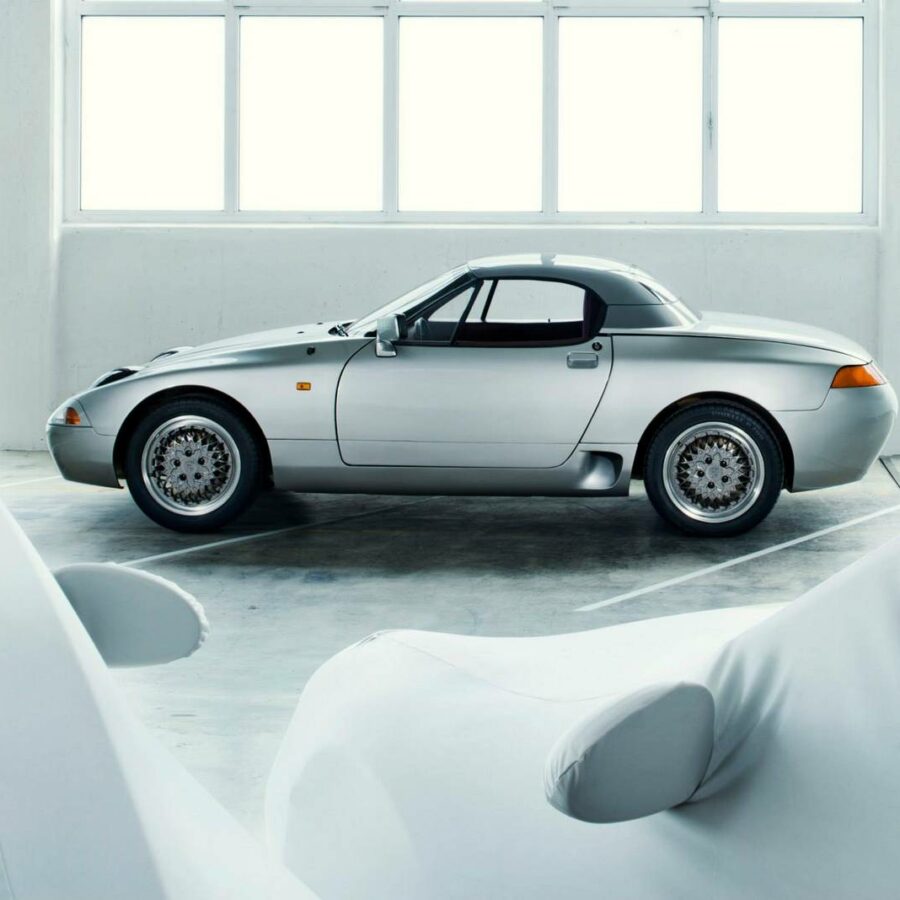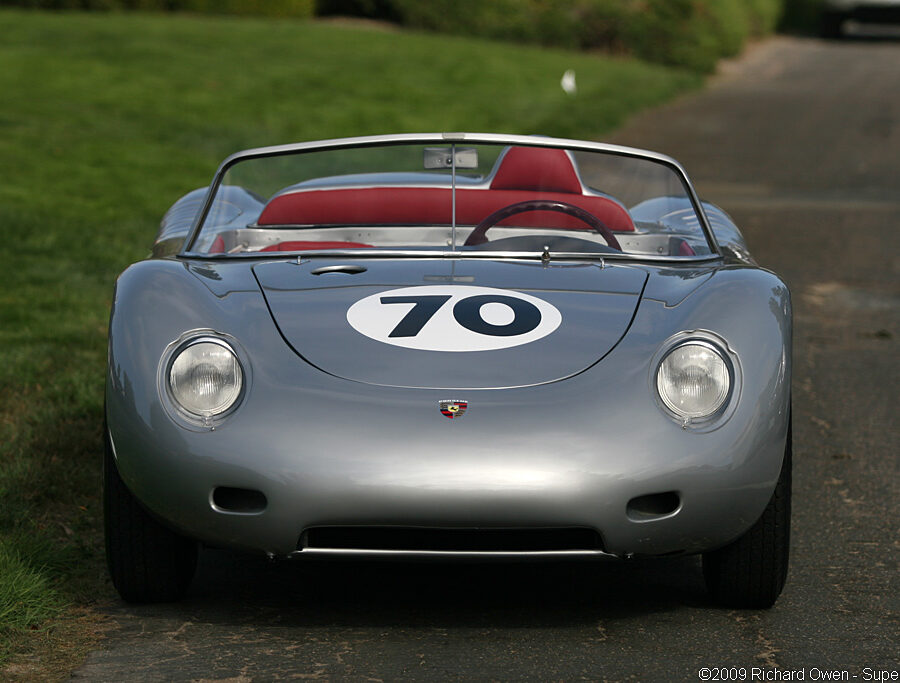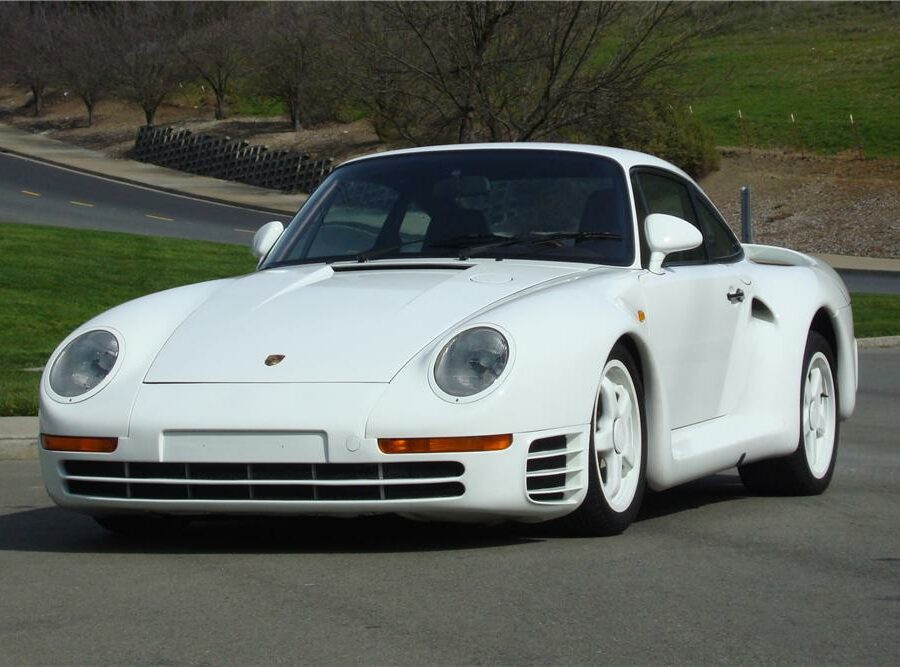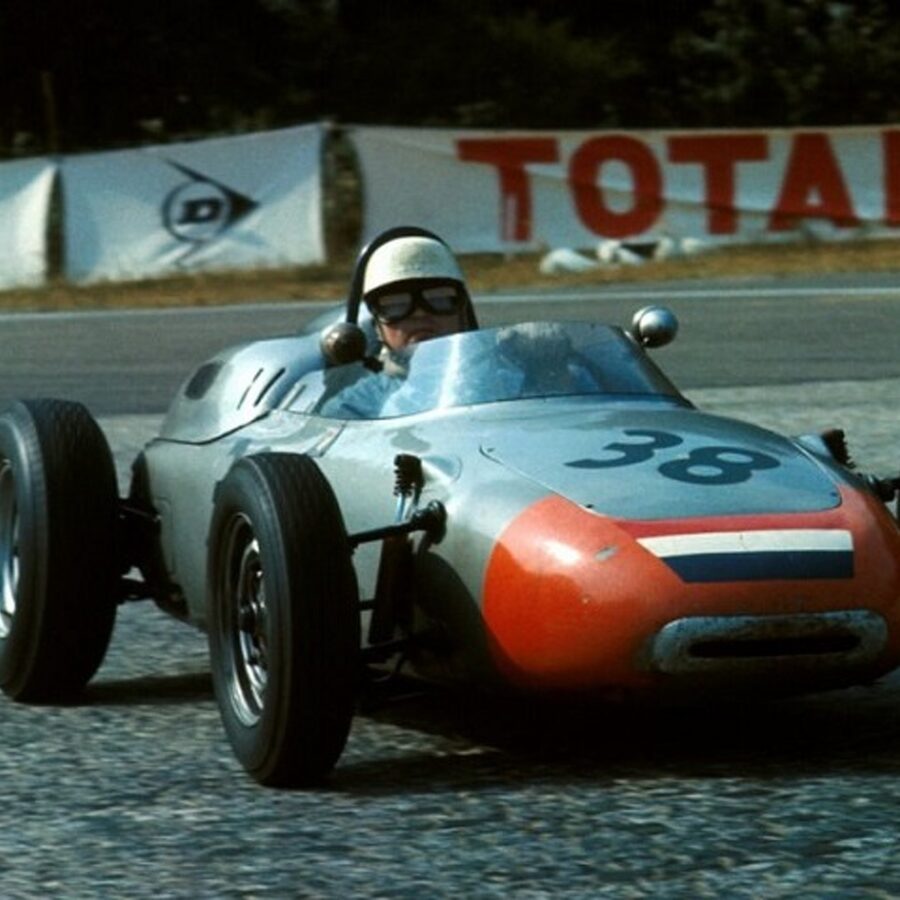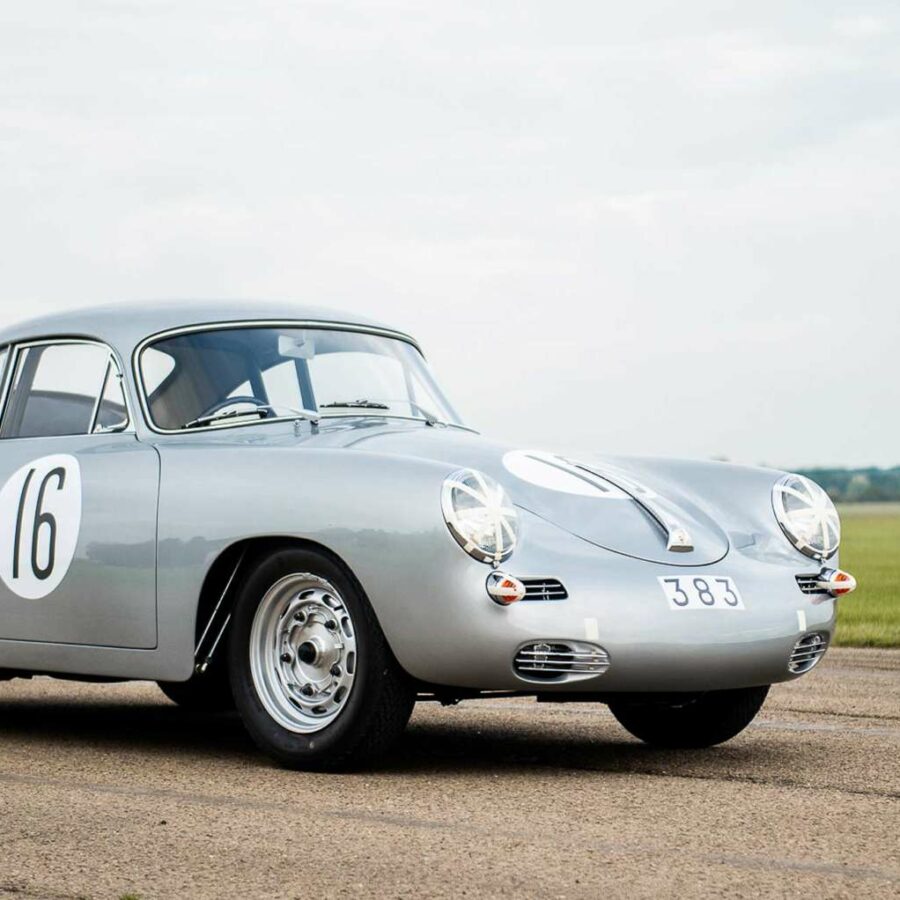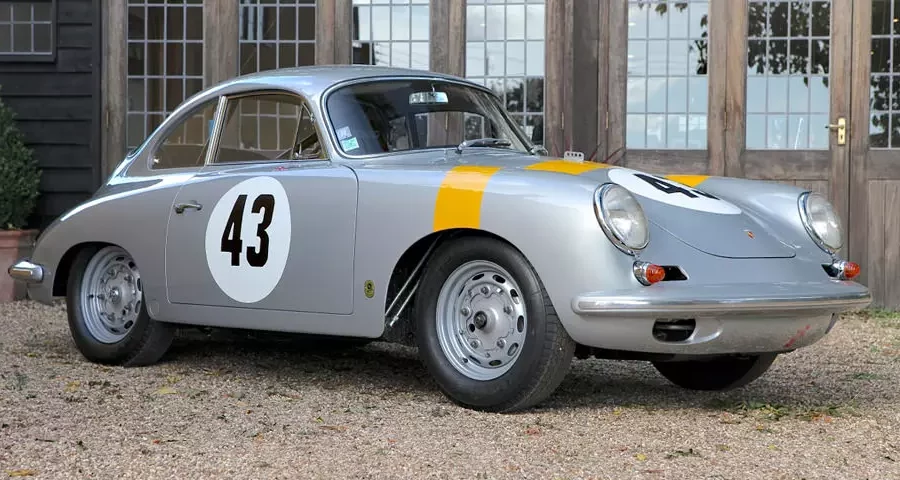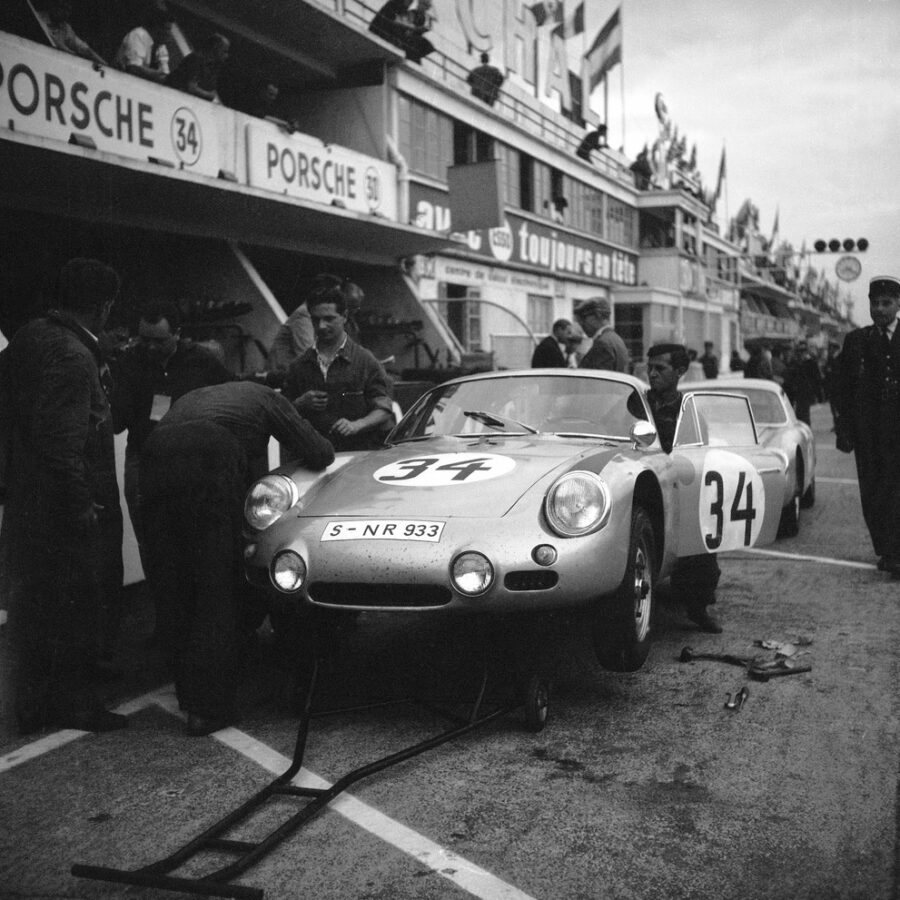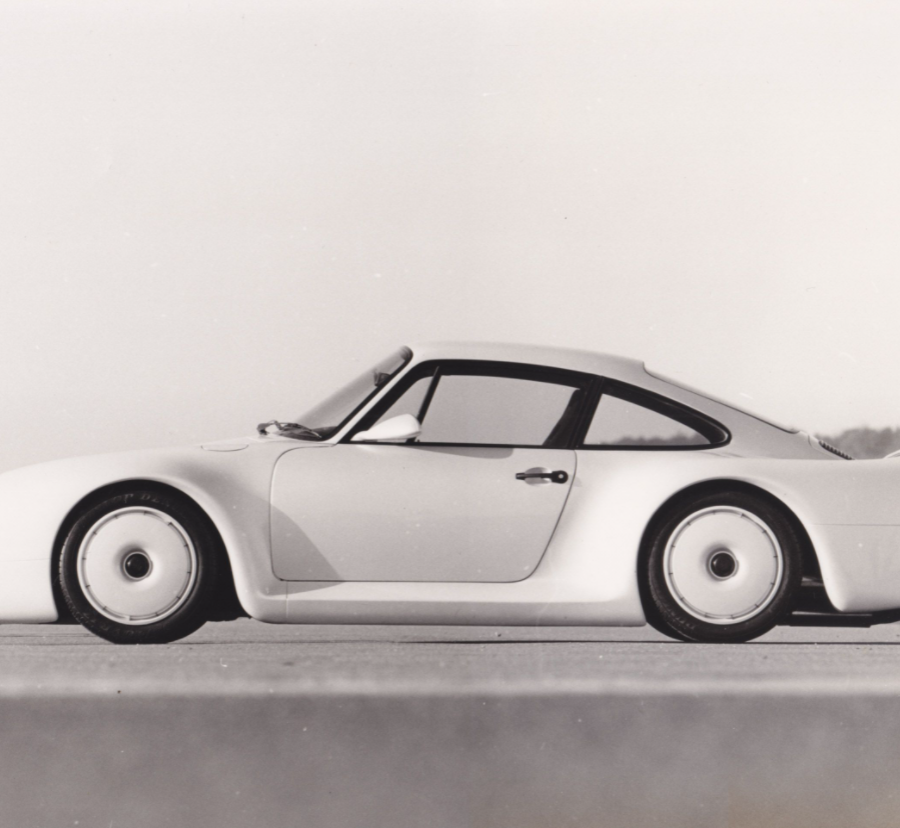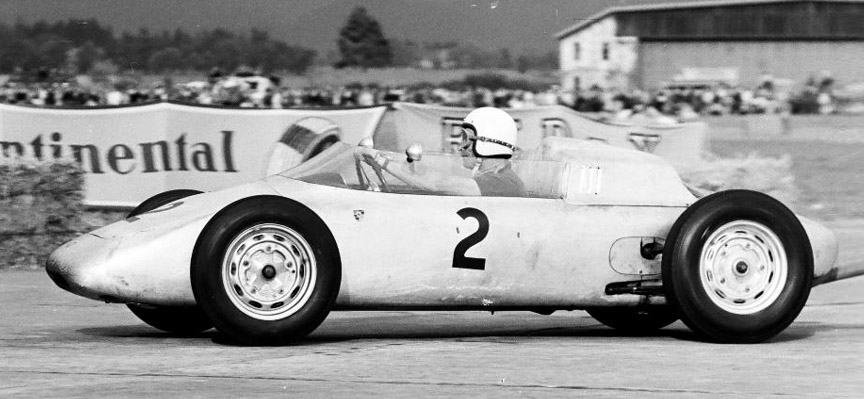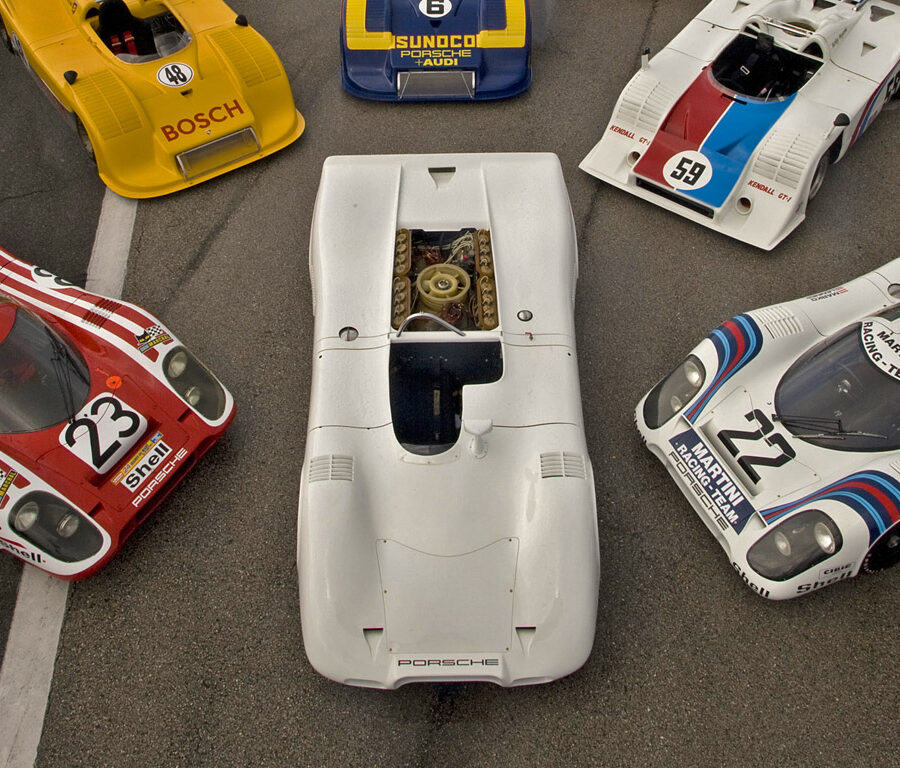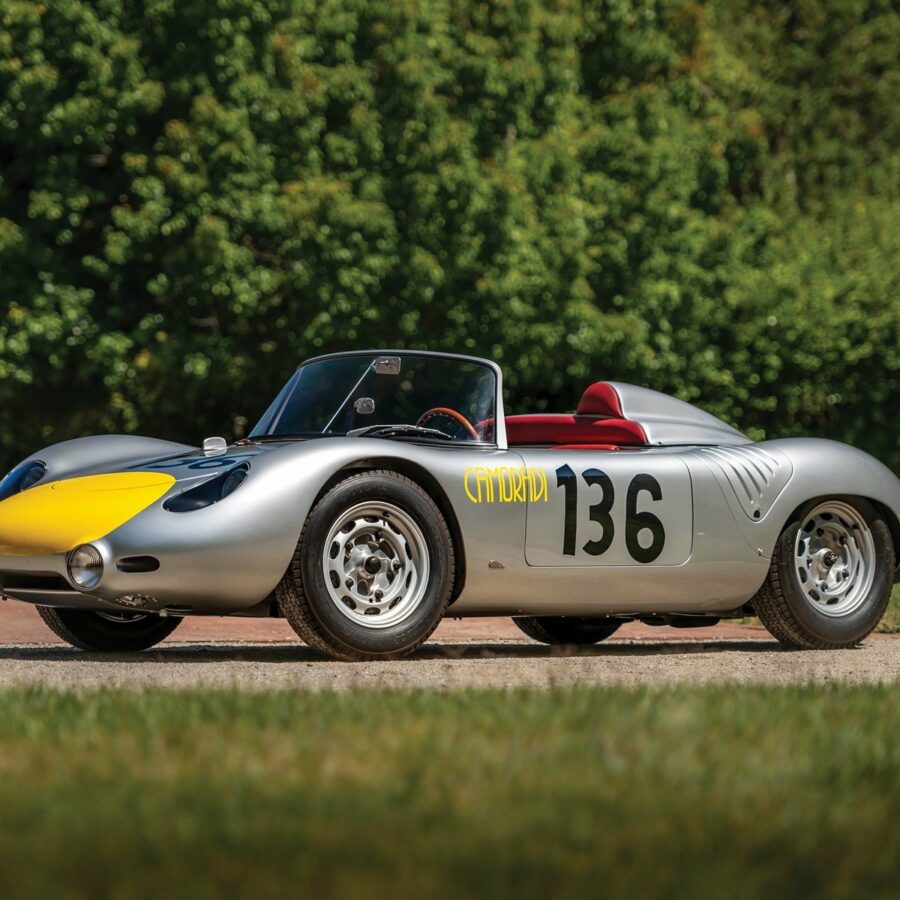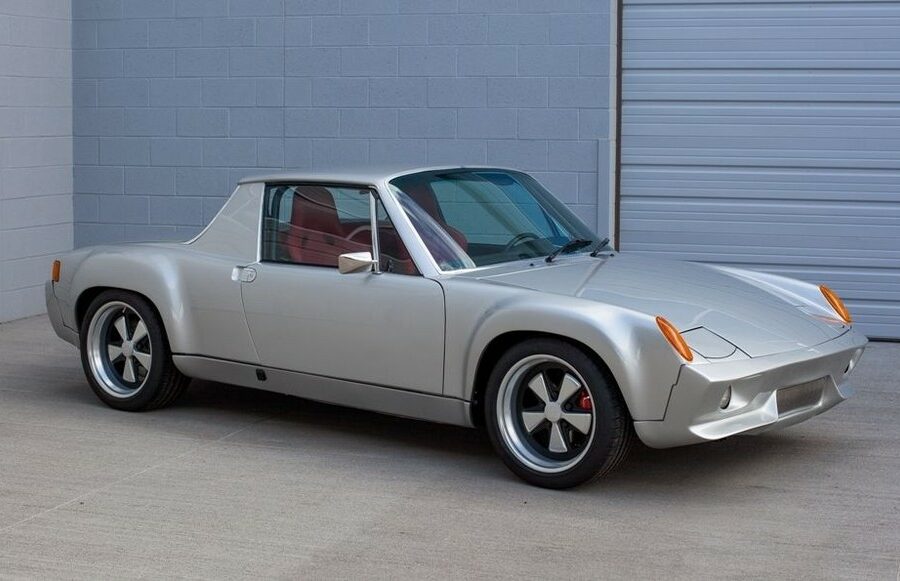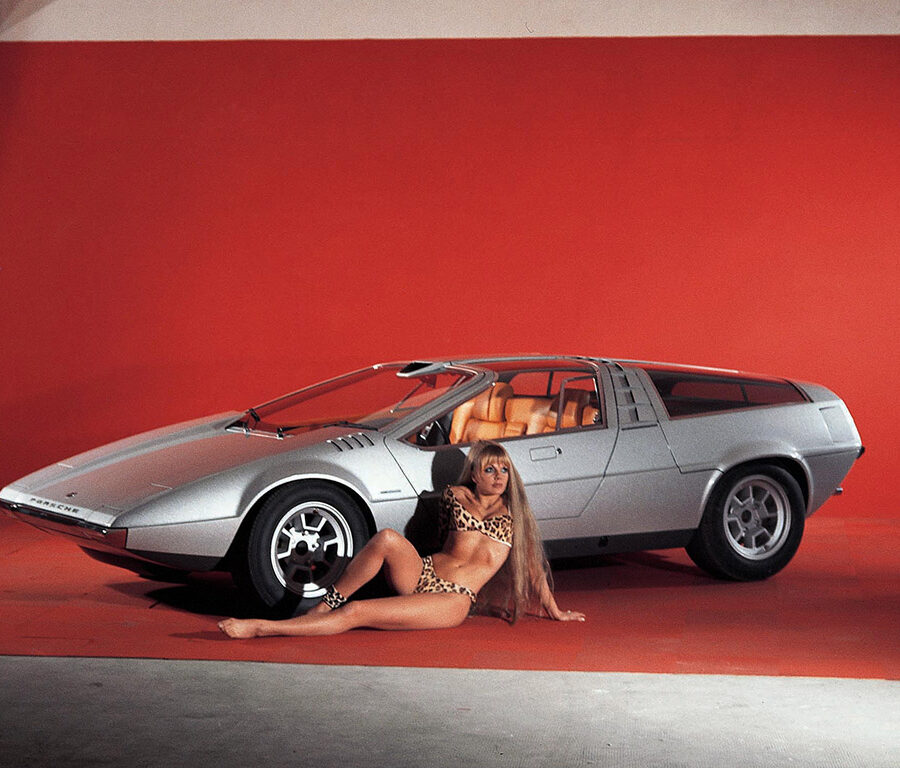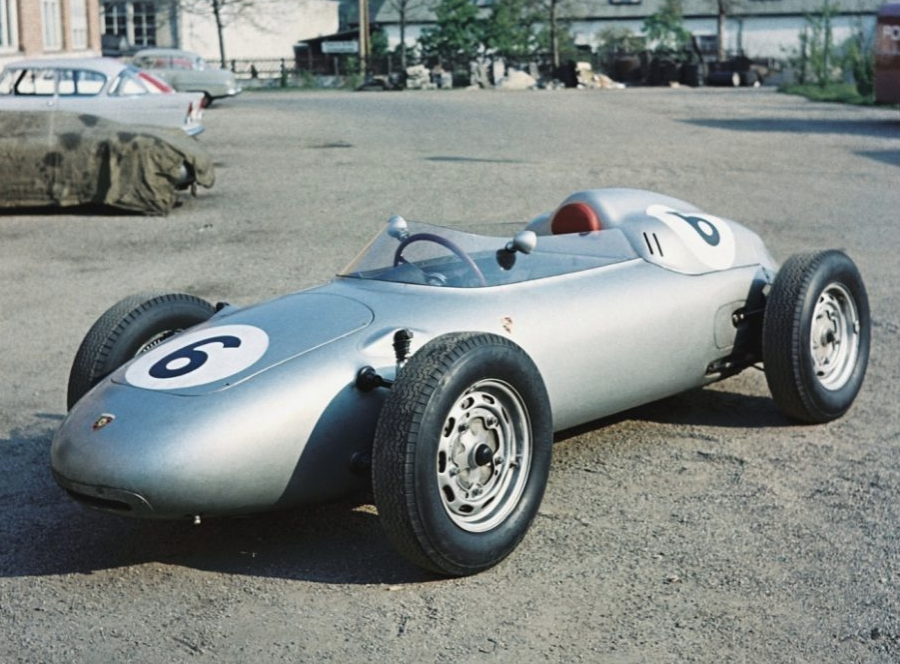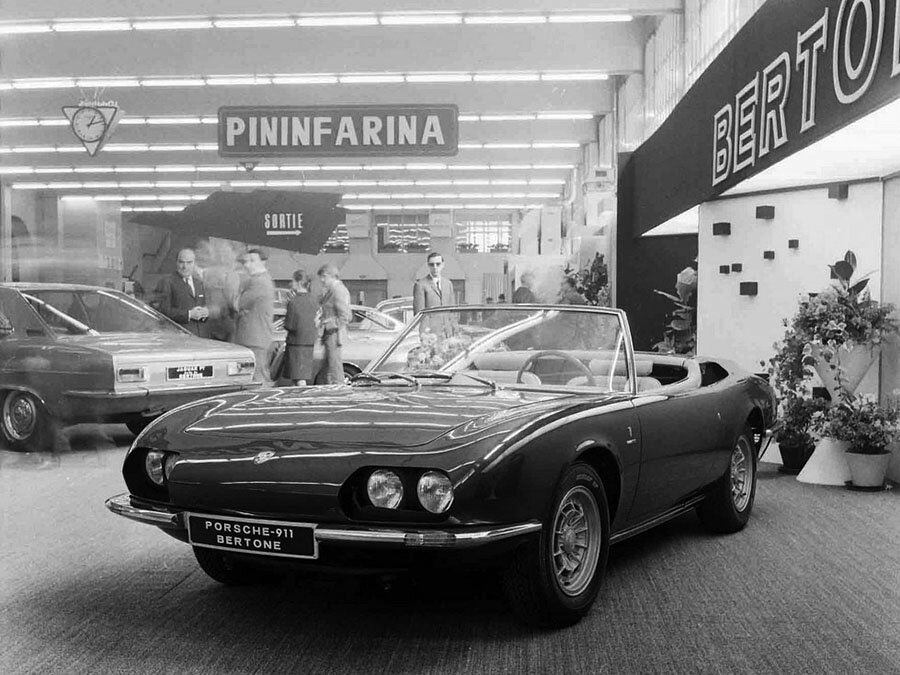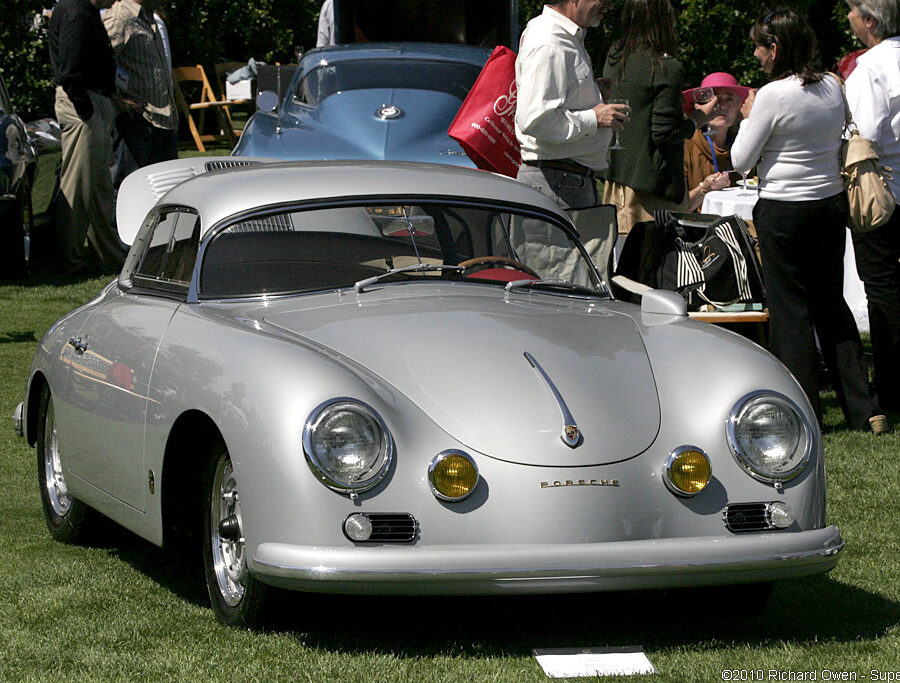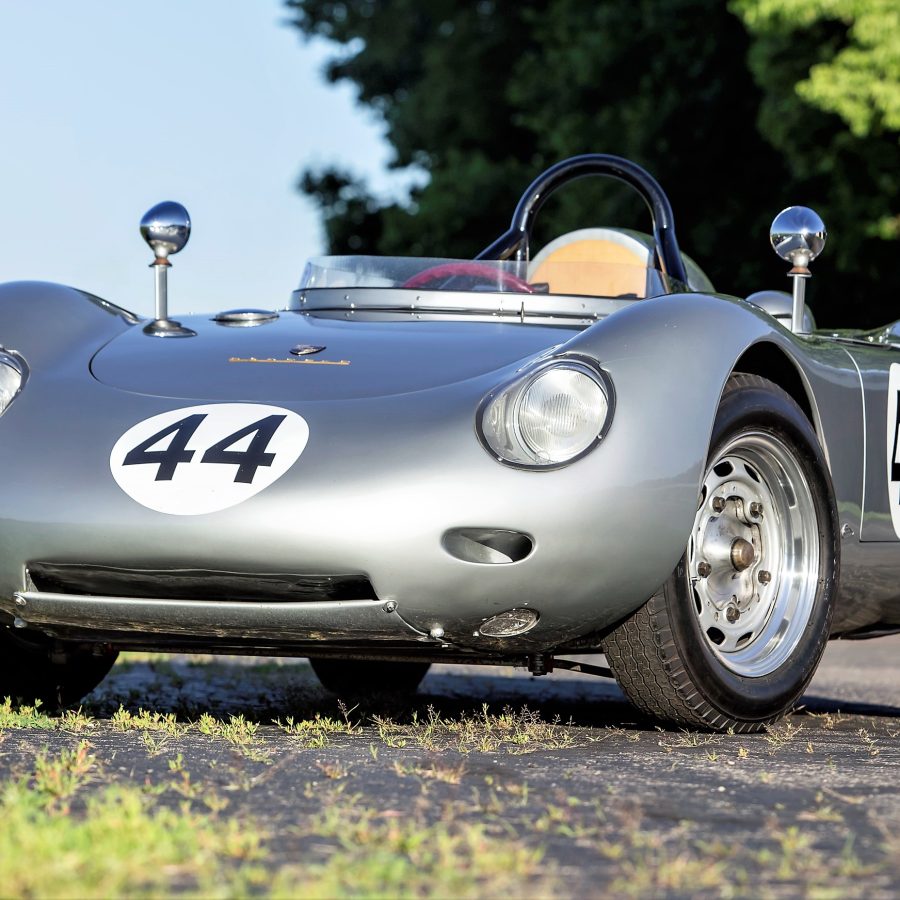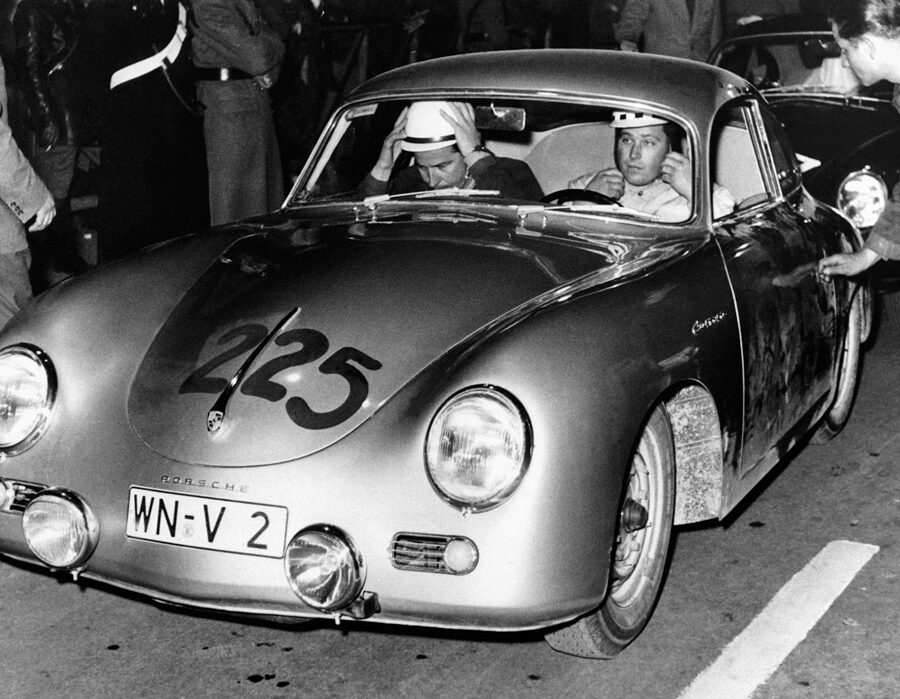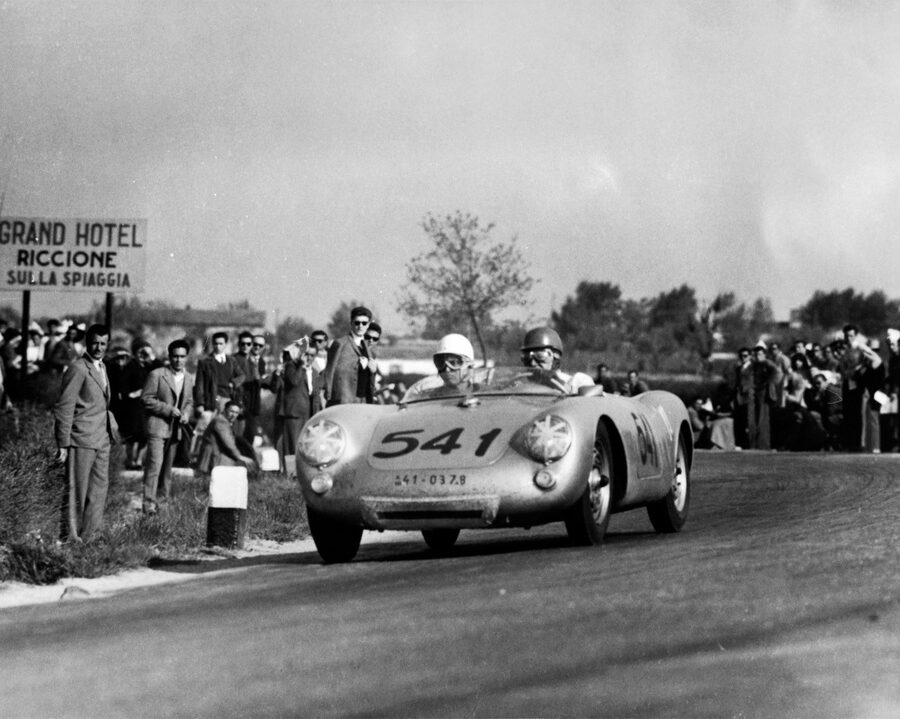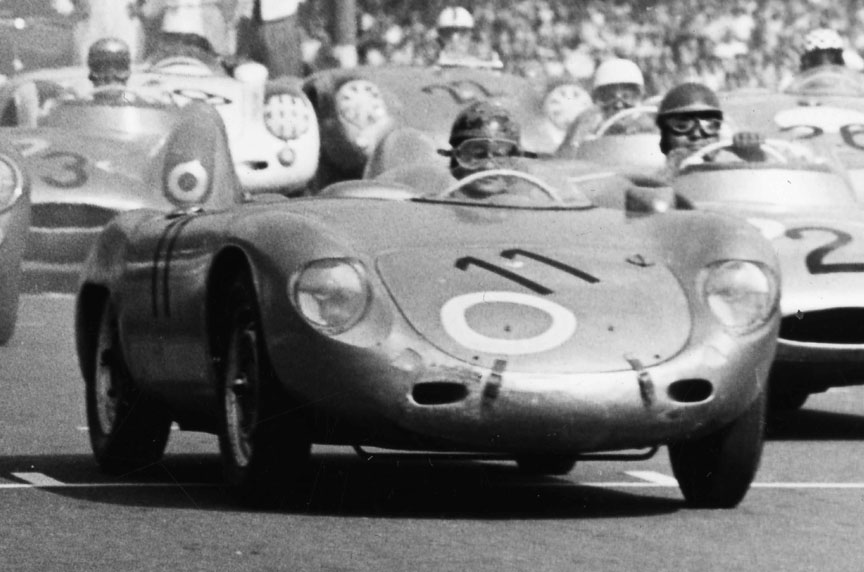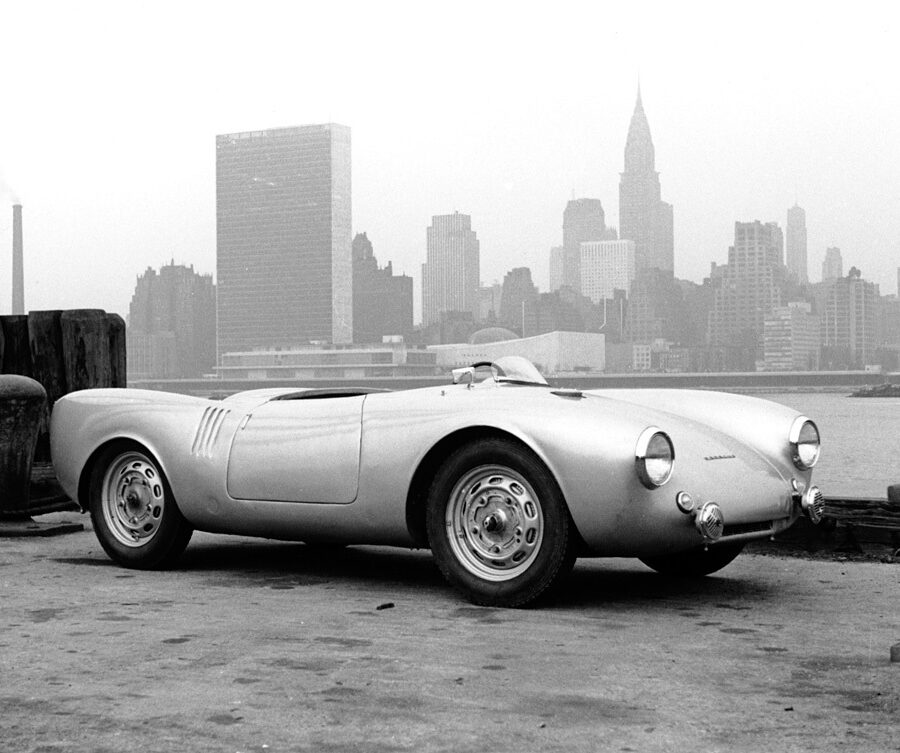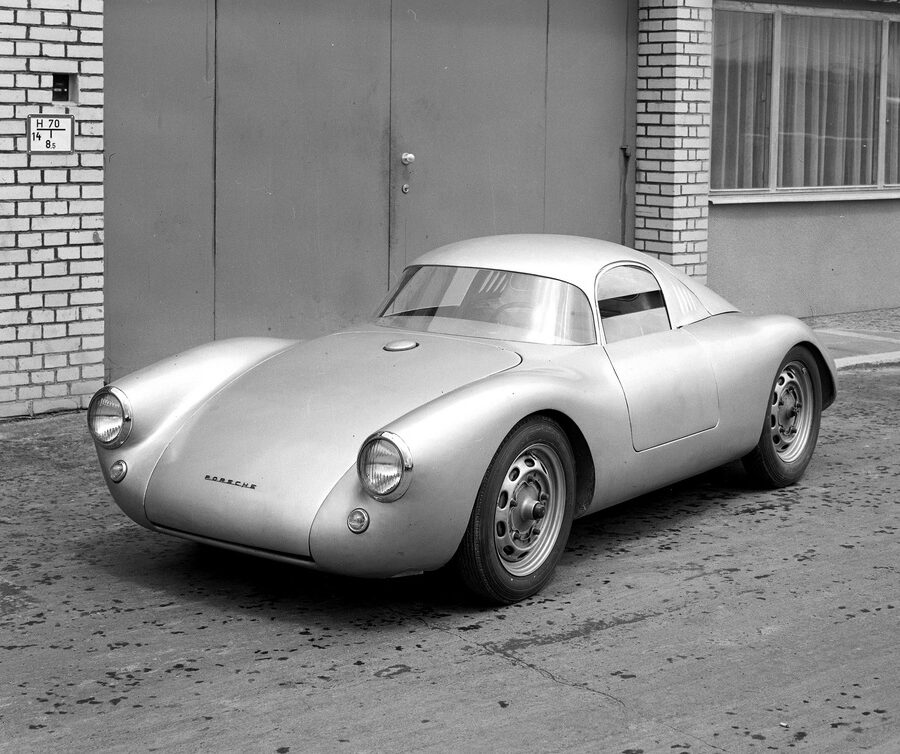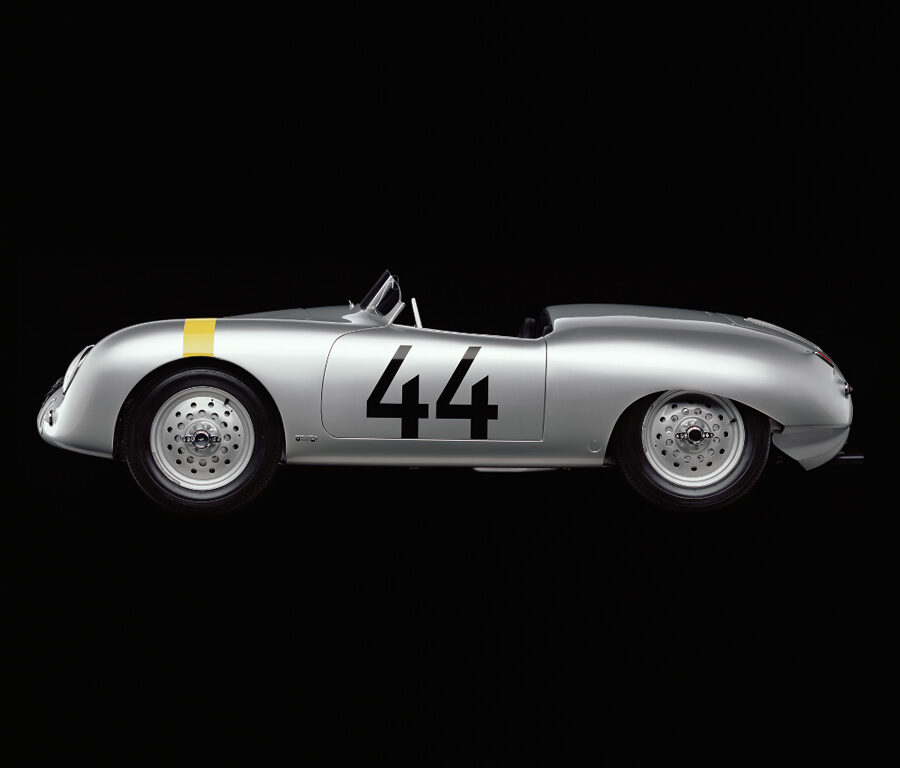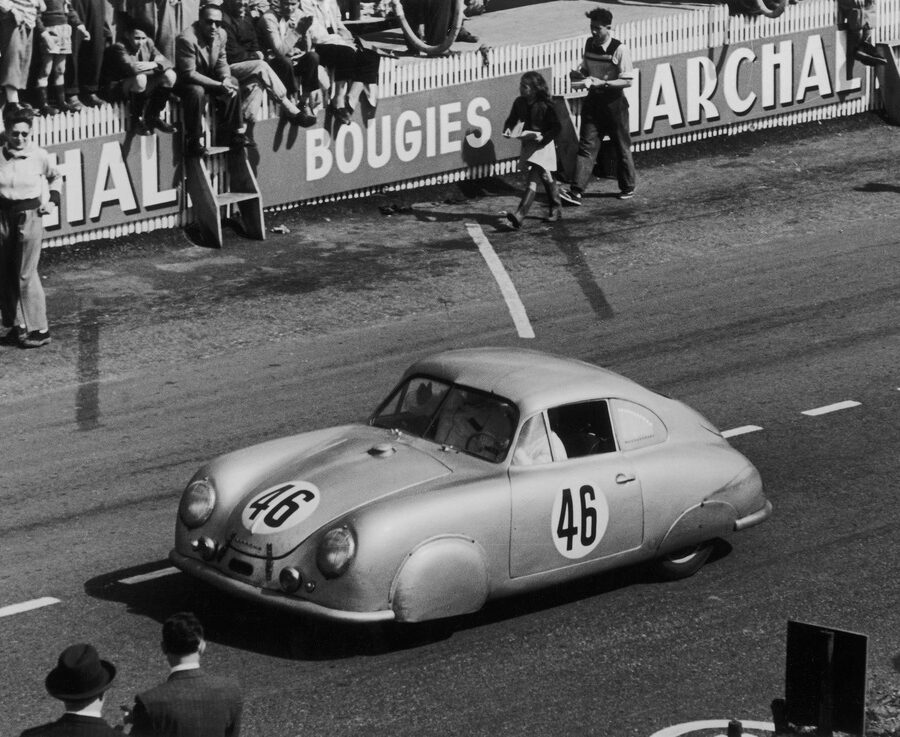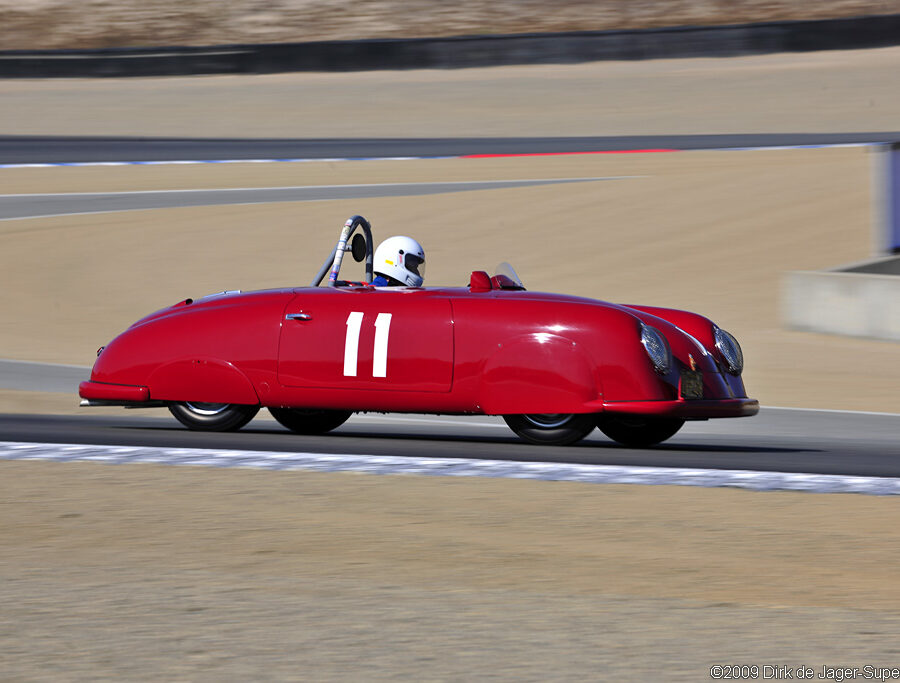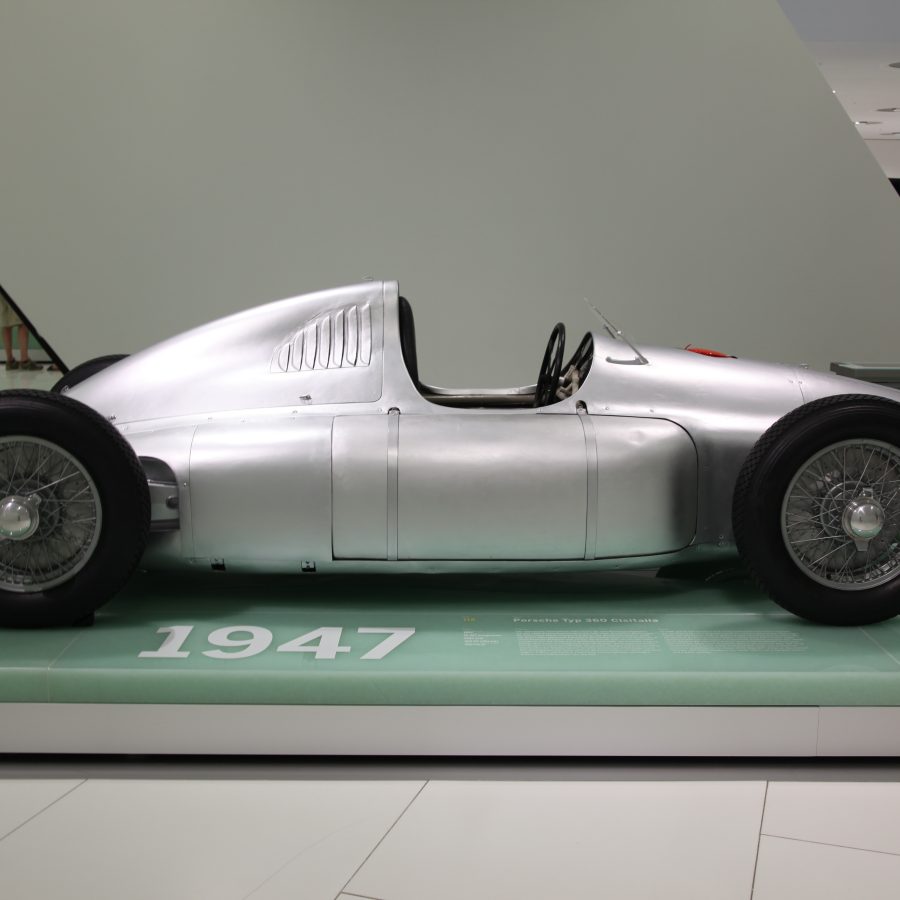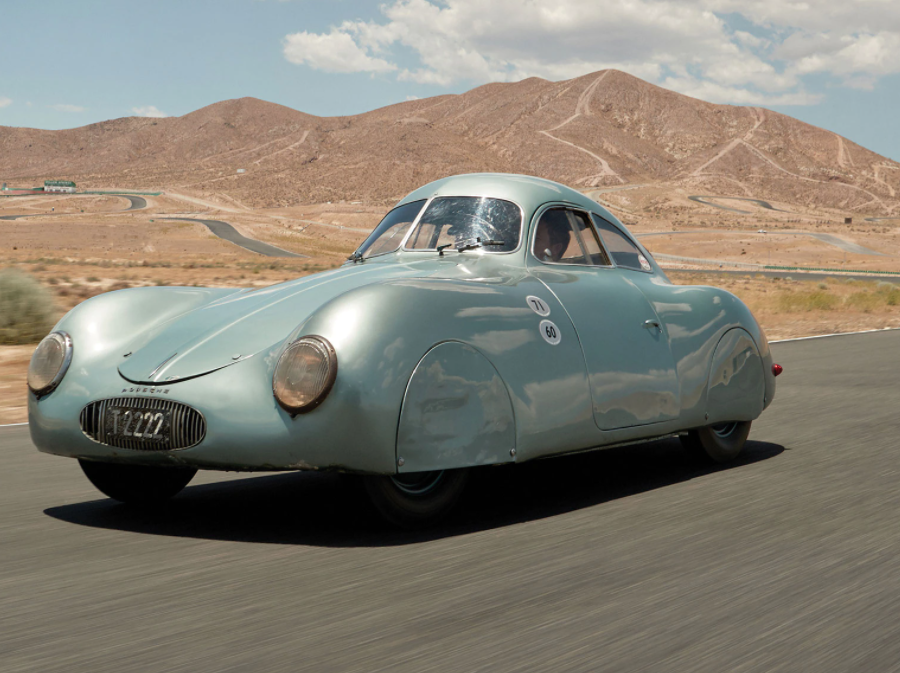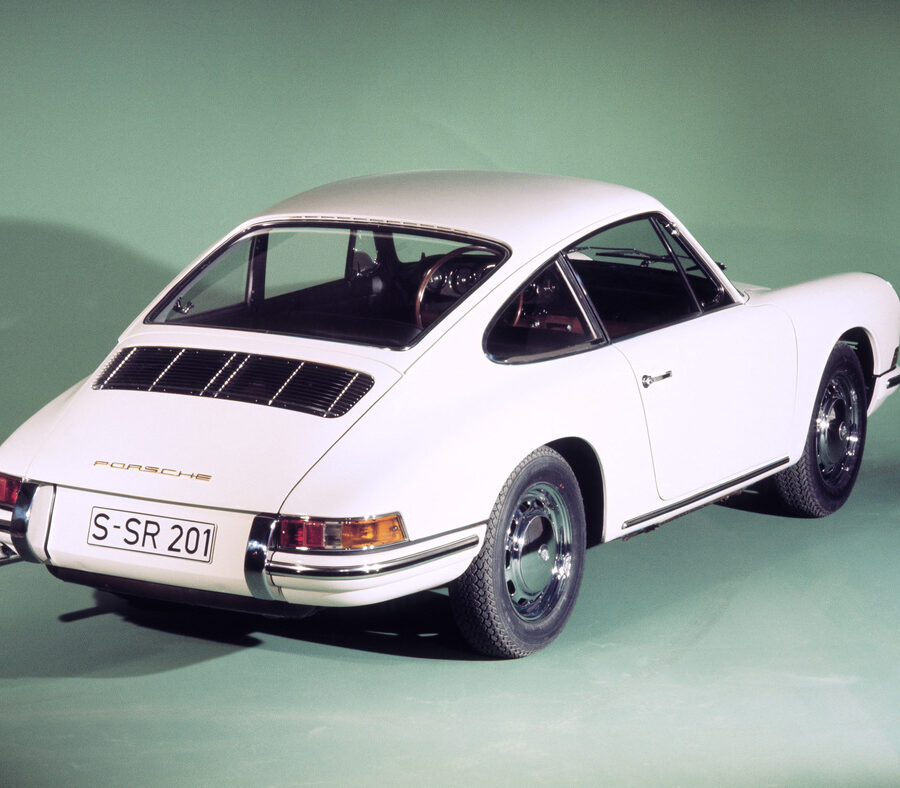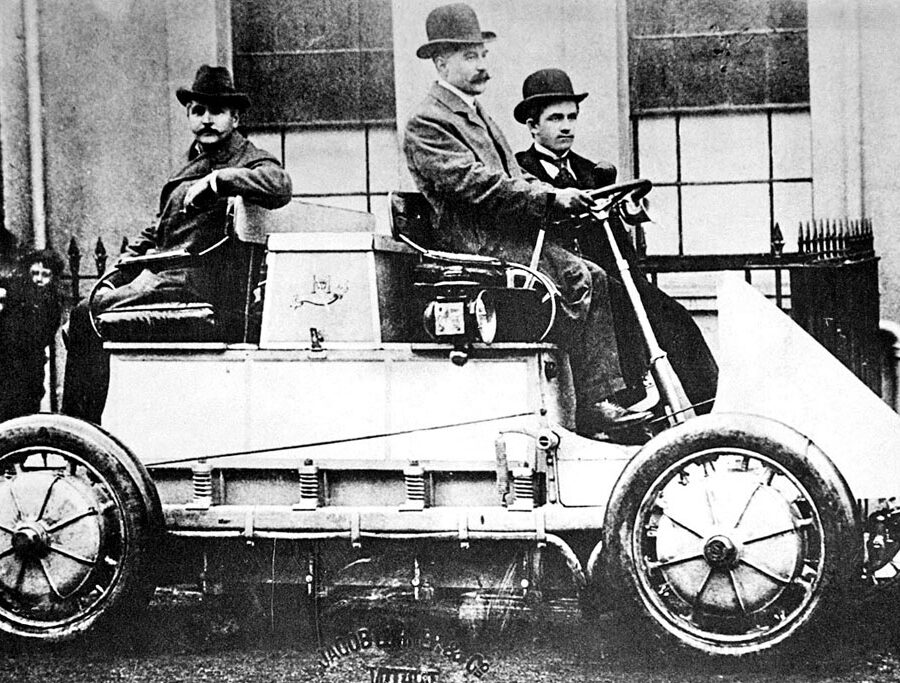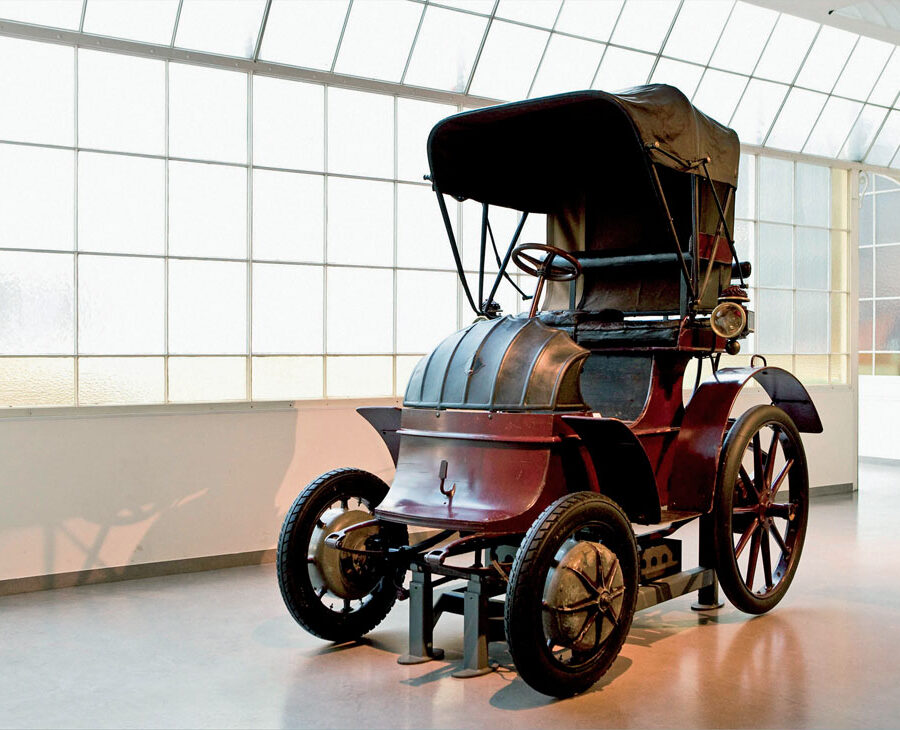Porsche 924 SCCA (924D) (1979)
These cars were designed by the factory to race in SCCA D Production Championship starting in 1979.
Porsche 911 SC Safari (1978)
In 1978 a pair of 911s were entered into the East African Safari Rally.
Porsche 935/78 ‘Moby Dick’ (1978)
The 935/78 was the ultimate expression of the 911 factory race car before Porsche officially withdrew from motor sport.
Porsche 935/77 (1977)
The Group 4 racer based on the 911 Turbo (930)
Porsche 935/76 (1976)
The Group 4 racer based on the 911 Turbo (930)
Porsche 934/5 (1976 – 1977)
The Porsche 934/5 was effectively a hybrid of the Porsche 934 and 935 built to compete in Group 4 of the IMSA
Porsche 934 (1976 – 1977)
Using the 930 Turbo as a basis, Porsche built the 934 for Group 4 GT racing.
Porsche 908/03 Spyder Turbo (1975 – 1981)
Porsche decided to end its 20-year history of factory sports car racing and sold the 908/03 cars to customers. In 1975, some 908s were fitted with turbocharged engines.
Porsche 911 Carrera RSR 3.0 (1974 – 1975)
The 3.0 RSR was one of the most successful Group 4 racing cars ever
Porsche 911 Carrera Turbo 2.1 (1974)
The first turbocharged Porsche 911, and the first turbo-powered Porsche race car at Le Mans.
Porsche 911 Carrera RSR 2.8 (1973)
The first 911 to ever wear the RSR badge and homologated for racing by the 1973 911 Carrera RS
Porsche 917/20 Turbo (1973 – 1974)
The 917/20 Turbo is a confusing car - its chassis number reads 917/30-001, but it is not the real 917/30
Porsche 917/30 Spyder (1972 – 1973)
The Car That Killed Can-Am
Porsche 917/10 Turbo (1972)
The first turbo-Porsche, Can-Am winner 1972, Interserie winner 1972, 1973
Porsche 917/10-72 (1972)
The 1972 917/10 was similar to the 908/03, but had the 12-cylinder engine instead of the 3-litre flat-8.
Porsche 917/10-71 (1971)
Only two 917/10 were created in 1971.
Porsche 917/20 Le Mans (1971)
The Pink Pig
Porsche 917 K-71 (1971)
For the 1971 Season, the 917 Kurzheck Coupé (917K) was upgraded in several ways
Porsche 917 LH-71 (1971)
Like the 917 LH of 1969 and 1970, the 1971 version was also made for one race only - the 24 hours of Le Mans.
Porsche 911 S/T (1970 – 1971)
Built to take full advantage of new FIA rules allowing a two-inch wider track.
Porsche 917 K-70 (1970)
The 917 Kurzheck Coupé (917K) first appeared in 1970. A winner from day one.
Porsche 917 ‘Interserie Spyder’ (1969 – 1970)
Of all the 917 variants, the ‘Interserie Spyder’ was one of the most successful. It won the Interserie championship outright for two years in a row before the model was replaced by the 917/10 of 1972
Porsche 917 K-69 (1969)
The short tail 917 K ("Kurz" in German for short) was raced first. The only engine available in 1969 was the 4.5-litre flat 12.
Porsche 917 LH-69 (1969)
For the 1969 racing season the absolutely new Porsche 917 with 4.5-litre 12-cylinder engine was created.
Porsche 908/03 Spyder (1969 – 1971)
This 908 received a completely new tubular frame based on that of the 909 Bergspyder and its three liter engine was moved forward.
Porsche 908 LH Flunder Spyder (1969 – 1975)
There was a belief that longer bodies are more aerodynamic and are therefore better for faster tracks, so a 908 Flunder Spyder with a longer tail was created
Porsche 908 K Flunder Spyder (1969 – 1975)
The 908/02 K Spyder and 908 K Flunder Spyder were basically the same cars with slightly different bodywork
Porsche 908/02 K Spyder (1969 – 1972)
Notching up over 50 major victories and more than 100 podium results, the 908/02 Spyder is one of the most successful Porsche race cars
Porsche 911 T/R (1968)
The 911T in 1968 was the lightest 911 making it ideal for racing where the SWB T was homologated for Group 3.
Porsche 908/01 K Coupé (1968 – 1969)
In the late sixties, Ferdinand Piëch wanted Porsche at the top of motor sports and the 908 was his answer.
Porsche 908/01 LH Coupé (1968 – 1969)
In the late sixties, Ferdinand Piëch wanted Porsche at the top of motor sports and the 908 was his answer.
Porsche 909 Bergspyder (1968)
The 909 Bergspyder did not win a major event. It ended up being an awesome laboratory of ideas (not all worked).
Porsche 911 R (1967 – 1968)
A lightweight racer designed to take the newly released 911 to its limit
Porsche 907 LH (1967 – 1968)
The First Porsche Ever to Win a 24-Hour Endurance Race.
Porsche 907 K (1967 – 1968)
The 907 was conceived and built as a way to win the 1967 Le Mans race.
Porsche 910 Targa (1967 – 1968)
Porsche 910 was the evolution of the 906 with Ferdinand Piëch as its main driving force and Hans Mezger
Porsche 910 Bergspyder (1967 – 1968)
In 1967 and 1968, Porsche's lightweight 910 Bergspyder was a championship-winning machine
Porsche 906 E Carrera 6 (1967)
Nine factory vehicles received the 2-liter, six-cylinder boxer engine with an injection system
Porsche 906 Carrera 6 (K Coupé) (1966)
Developed for endurance sports car racing, the 906 was a street-legal racing car that raced in the FIA's Group 4 class
Porsche 906/8 Coupe (1966)
Another four factory 906s received an air-cooled eight-cylinder boxer engine of the type 771, which was already used in the 904/8.
Porsche 906 LH Coupé (1966)
For the 1966 Le Mans 24h race, long-tail LH ("Langheck") versions were made and now the standard 906 were called as 906 K ("Kurz", short in German)
Porsche 906 Spyder (1965)
The 906 Spyder was the first Porsche racing car built under Ferdinand Piëch's orders and there could be only a person as determined as Piëch to use Lotus parts on a Porsche.
Porsche 904/8 Carrera GTS (1964 – 1965)
Three factory 904 race cars were fitted with a flat eight-cylinder power plant derived from the 1962 804 F1 car
Porsche C88 (1994)
Porsche's Attempt At Creating The Chinese People's Car
Porsche 904/6 Carrera GTS (1964 – 1965)
In 1965, the 904’s second and final production year, some examples received a version of the 911’s 2.0-liter flat-six. This version was dubbed the 904/6.
Porsche 989 (1991)
A four door performance sedan concept that maintained the iconic shape of the 911 Carrera
Porsche 904 Carrera GTS (1963 – 1964)
The Porsche 904 debuted late in 1963, for the 1964 racing season. The 1965 Porsche 904 Carrera GTS variant to compete in the FIA-GT class
Porsche 356 B 2000 GS/GT Carrera (1962 – 1963)
After a long absence of a Carrera model in the 356 model lineup, Porsche made another version with the intro of a 2.0L engine.
Porsche Panamericana (1989)
When Dr. Ferry Porsche turned 80 years old, he received a 1989 Porsche Panamericana concept car as a gift.
Porsche 804 F1 (1962)
The Porsche 804 competed in Formula One (F1) in 1962. Porsche developed an 8-cylinder engine for it.
Porsche 969 (1988)
Intended as the successor to the Porsche 930, the car did not get past the prototype stage.
Porsche 928 H50 (1987)
In 1987 Porsche experimented with a long-wheel-base 928 called the H50
Porsche 984 Concept Car (1984 – 1987)
The Porsche Junior concept car.
Porsche 965 (1984)
The Porsche 965 was a V8-powered 911 from 1984
Porsche 718 RS 61 Spyder (1961)
The 1961 Porsche RS was one of the last Spyders made by Porsche that used the potent 4-cam engine. It was a successor to the 1960 RS60
Porsche 787 F1 (1961)
For the 1961 F1 season Porsche created a new car called 787.
Porsche 356 B 1600 GS/GT Carrera Coupe (1960 -1961)
Just 49 356 B GS/GTs Produced. Built from lightweight materials and had Porsche’s most powerful racing engine of the time
Porsche 356B 1600 Super 90 GT Coupe (1960 – 1961)
Fourteen Super 90 Coupes were ordered with the lightweight GT package for racing.
Porsche 356B/1600GS Carrera GTL Abarth (1960 – 1961)
In keeping with FIA regulations, Porsche created a new lightweight 356 with help from Abarth
Porsche 959 “Gruppe B” Prototype (1983)
The idea for 959 was born as early as 1983 with this Guppe B prototype
Porsche 718/2-05 Experimental F2 (1960)
The fifth and the last of the 718/2 F2 cars, with chassis number 718/2-05 was an experimental formula racing car
Porsche 718 RS 60 Spyder (1960)
Changes thanks to new regulations and a larger engine gave us the RS60
Porsche 916 Concept (1971)
Ferdinand Piëch saw potential for a higher-performance, luxurious version of the 914. The result was the 916.
Porsche Tapiro Concept (1970)
Giugiaro's 4th prototype at Italdesign was this radical Tapiro.
Porsche 718/2 F2 (1959 – 1963)
For 1959, Porsche created a completely new Formula 2 car instead of the Mittellenker-version of the 718 RSK. Became known as the 718/2 or 718 F2.
Porsche 911 2.0 Bertone (1966)
Southern California Porsche dealer Johnny von Neumann knew what his customers wanted, and a Targa top Targa 911 wasn’t it.
Porsche 356 A 1600 GS Carrera GT (1958 – 1959)
Sold alongside the Carrera de Luxe, the GT was lightened and prepared for racing.
Porsche 718 RSK Mittellenker (1958)
For 1958, the 718 RSK Spyder was modified to compete in FIA Formula racing events. Gone was the conventional two-seat layout now replaced with a single seat in the middle.
Porsche 356 A 1500 GS Carrera GT (1957 – 1958)
The fastest street-legal automobile offered by the still-small German automaker in 1957
Porsche 718 RSK Spyder (1957 – 1959)
The Porsche 718 RSK Spyder was the culmination of years of competition racers by Porsche
Porsche 550A RS Spyder (1956 – 1957)
The 550A was based on Porsche’s first purpose-built racing car, the mid-engined RS 550 Spyder.
Porsche 550 RS Spyder (1954 – 1956)
The giant killer
Porsche 645 Spyder (1953)
Planned as a successor to the Porsche 550, the car was discontinued in favor of the revised 550A and the Porsche 718. Single example was destroyed in a spectacular crash.
Porsche 550 Prototype Spyder (1953)
Only 15 prototypes (including coupes) were made until regular production began in 1954 of the Porsche RS Spyder.
Porsche 550 Prototype Coupé (1953)
The first two Porsche 550s (Chassis #550-01 & #550-02) were coupes
Porsche-Glöckler 356 Roadster (1952)
Successful VW Dealer and sporstcar racer, Walter Glöckler built this special car for the German Car Championship
Porsche 356 SL Gmünd Coupe (1951)
In 1950, eleven remaining Gmund chassis were assembled after the factory returned to Germany and converted to SL racing spec
Porsche 356 SL Roadster (1951)
Before the 1952 races at Torrey Pines, von Neumann had Emil Diedt remove the coupe's roof, creating in effect the first Carrera Speedster.
Porsche Type 360 Cisitalia (1948 – 1949)
The Cisitalia Grand Prix is a single-seater car for the postwar 1.5-litre supercharged Grand Prix class, built by Italian sports car manufacturer Cisitalia and introduced in 1949.
Porsche Type 64 (1939 – 1940)
KdF Berlin-Rome race car. The Porsche Type 64 (1939-1940)


